|
We often get asked about whether it is possible to have a pet ferret if you also have a pet bunny, parrot, or other small mammal in the home. There are many stories about pet ferrets causing injury or even death to other pets, but these accidents are preventable. In this series, we are going to discuss different elements that you should be aware of before you mix a pet ferret with other prey type pets. This is the fourth part of this series. You can find links to the parts down below. In the first part we already discussed the biology and domestication process of ferrets. In the second part we discussed how to make your other animal friend safe and comfortable. In the third part, we started our focus on ferrets. In this section, we will cover more advanced training techniques that can be used to desensitize the ferret and delay the predatory response. This is not a training process that we recommend for the average pet owner. For most pet owners, it should be sufficient to desentize the animals as we discussed in previous posts and to prevent direct interaction between them. We are sharing our training techniques for other professionals who work in animal ambassador programs or provide educational services using live animals. In this type of work, these animals are often transported in travel carriers to unfamiliar places and there are more variables that can be difficult to control. This training is an unnecessary risk for casual pet owners who have more control over their home environment and reducing risks of accidental interaction. The goal of this training is to create more time for intervention in case of an accidental interaction or exposure. In the case of educational programs, this could be as simple as a well-intentioned program participant moving an animal carrier closer to another carrier without realizing that the space between the ferret carrier and rabbit carrier were intentional. Or it could be an unsupervised child opening the parrot travel carrier while the animal handler is presenting the ferret. Mistakes happen and accidents happen. Hopefully this training can help prevent them from becoming an emergency. This training process assumes that both animals are already highly socialized and desensitized to new environments. Target training is recommended and flight recall should already be trained for birds. The prey type animal should already have enough exposure to ferrets that there is no fear response or agitation caused by the ferret’s presence. The first step in this process is to gauge the ferret’s predatory drive. How does the ferret respond when you wave a feather in their face? Will the ferret chase a toy mouse on a string? How is the ferret’s impulse control while playing? Does the ferret easily get carried away or does the ferret show inhibition with biting by being gentle or avoiding nipping? Some ferrets are going to require a longer training process than others. This helps determine where to start. If you’ve already target trained the ferret, that is good, but I also recommend training this auditory cue. If you remember from the first part, ferrets are very near-sighted, but they have an excellent ability to locate a sound. For our ferrets, we provide a consistent tapping sound on the floor. We want to train the ferret to locate the source of the sound instead of using a target because the ferret will be capable of doing this over a greater distance and they will notice a sound more quickly than a nonmoving visual object. We want the sound to capture their attention in a way that would be more difficult to do with a target stick. The reason we train this behavior is for a common behavioral training trick. If you want to stop an animal from doing an unwanted behavior, you can give the animal a task to perform that competes with the unwanted behavior. In this case, the unwanted behavior is the ferret investigating a new animal. The ferret cannot investigate a new animal if it is locating the source of a sound that is in a different direction than the new animal. Those two behaviors are in competition. We want the ferret to decide between locating the source of this sound which has a reward or investigating this new animal which is rewarding by satisfying their curiosity. But we are going to manipulate the situation so that coming to where we are tapping will be more rewarding than following their instinct to investigate the new animal. From there, we can work on training them to ignore the new animal. In the video clip below, you can see part of this training process with Jack that was done in 2017. Depending on the level of predatory instinct, you may have to start training using substitutes. This can be a stuffed animal that has the other animal’s scent. For parrots, it is easiest to use their molted feathers. What you will do is to make these objects move in ways that are stimulating for the ferret and then you want to reward for “calm”. This may involve some shaping. You may place the feather on the floor and then call the ferret away before you progress to instigating the unwanted behavior. If a ferret reaches for the object with an open mouth, you may want to work on training for calmly sniffing the object before asking the ferret to move away. This training is tricky because you are instigating the unwanted behavior. It is important not to scold or scruff your ferret for failing as this will cause the ferret to become frustrated. Simply ignore any failures, and reward behaviors that bring the ferret closer to being calm and disinterested. After this, you can start introducing the other animal in training sessions. You should have more than one trainer working together especially if the prey type animal has not been exposed to this situation and it is uncertain exactly how they will respond. You can use a harness on the ferret for additional control, but this may also cause distraction or confusion for the ferret. First you present the animal out of the ferret’s immediate range, but close enough that the ferret recognizes the new stimulus. If the ferret comes towards the other animal, you can lift the animal further out of reach. Also be aware that if the ferret is coming towards the animal, this can cause the other animal to react in fear or cause them to flee which is the opposite of what you want to happen. By lifting the other animal further out of reach, you want to maintain that animal’s comfort and trust in this process. At the same time that the new animal is presented, the tapping sound should also start. This can be done by you or the other trainer. This behavior should also have been generalized to the other trainer before starting any sessions with the new animal. At first, the ferret may choose to investigate the new animal instead of performing the desired behavior. As before, failure is ignored. If the ferret is not staying calm and is persistent in its efforts to access the new animal, then you should return to earlier steps in the training process. If the ferret loses interest once the new animal is out of reach and is staying calm, then continue with the process. The ferret should start choosing to locate the sound and receive its reward. From here, you continue to present the new animal so that it is more within the ferret’s reach. If the ferret reverts to trying to investigate the new animal, then increase the distance again. Once the ferret can constantly perform this behavior as desired, then you can start desensitizing triggering behaviors. In July of 2020, we filmed Jack modeling his trained behaviors for the purposes of this series. Jack was so uninterested in the presence of the parrots that he decided to go take a nap instead. We had to encourage him to even acknowledge the birds so that we could show what the training would look like. For this training, we have mostly worked with parrots. Parrots are at higher risk of flying and landing on a person who might be holding a ferret, becoming startled and flying off, or potentially having a crash landing. The flight behavior is also very stimulating to predatory animals. For this training, we have the parrots do flight recall out of reach of the ferret. The ferret should be exposed to the movements, sounds, and breeze that is caused by the bird flying overhead. Then we want to reward for calm or give the ferret another task to complete while this is occurring. We do not want the bird to be in reach of the ferret or to land near the ferret during this training. This is additional desensitization.
Again, the goal of this training is to increase the length of time that you have to make an intervention in case of an accident in which the ferret and the other animal have access to each other. If the ferret suddenly realizes that a bunny, chinchilla, or parrot happens to be within reach, you want the ferret’s first response to look for a behavioral cue that means an opportunity for a reward rather than the excitement of seeing a new animal. You are trying to encourage the inhibition of a predatory response and creating a new meaning for this stimulus other than what is being provided by the ferret’s instincts. This training does not eliminate the predatory response or mean that the ferret is now safe to have around prey type animals. Again, we do not recommend this training for regular pet owners. Hopefully you now have a better understanding of the dynamics between ferrets and other household pets.
2 Comments
We often get asked about whether it is possible to have a pet ferret if you also have a pet bunny, rodent, or parrot in the home. There are many stories about pet ferrets causing injury or even death to other pets, but these accidents are preventable. In this series, we are going to discuss different elements that you should be aware of before you mix a pet ferret with other prey type pets. This is the third part of this series. You can find links to the other parts down below. In the first part we already discussed the biology and domestication process of ferrets. In the second part we discussed how to make your other animal friend safe and comfortable. Now, we are going to focus on the ferrets. In the predator/prey relationship between ferrets and other types of pets, most of the concerns about stress and safety falls on the prey type animal in the equation. For the most part, ferrets are not going to be stressed by the smell of prey type animals. Most of the smells and movements are interesting to ferrets, not scary. However, there is one type of pet that can cause stress for your pet ferret and those are birds. Remember in the first part when we discussed ferret’s hearing? There are certain high pitch sounds that cause distress in ferrets. We do not know if it is because the sound is similar to a crying kit, the cries of an injured ferret, or if the sound physically causes pain or discomfort. Birds are sometimes capable of making these high pitch sounds which are distressing for some ferrets. In our experience, it has always been female ferrets who have this problem. We resolve this by using a white noise machine in the room where the ferrets sleep. For whatever reason, this seems to work. Other risks to your ferret can include having their noses or toes bitten by other pets when they insert these body parts between cage bars as they attempt to get access to the other animal. If the other animal is trying to protect its territory and is interacting with the ferret through the cage bars, the ferret may be able to bite part of the animal and try to pull its body through the cage bar doing damage in the process. Cages that have tight bar spacing are not a safe barrier between a ferret and your other pet. Large pets such as pet macaws or bunnies can also inflict serious damage on a pet ferret. Animals like hedgehogs may seem like they are able to protect themselves, but interacting with a ferret can be extremely stressful for the hedgehog and it also poses a risk of salmonella for the ferret. This risk of salmonella is why it is advised for people to not kiss their hedgehogs and to wash their hands after handling. If ferrets are permitted to interact with other animals, there are behavioral cues that can easily be misread. Most videos that people have seen of a predatory animal attacking a prey animal are usually ambush predators such as cats or pack hunters such as dogs and wolves. Members of the weasel family have a different hunting style that is not as immediately recognizably. To give an example, we are showing you two clips involving the same ferret with two different types of animals. The first clip shows Samson with a young kitten, Peach. Here the risk of predator drift is low because the kitten does not smell like a prey type of animal. You will see that he is mostly grooming her ears and his demeanor is relaxed. He is not fixated on grooming any particular spot. Now we will compare this video with a video of the same ferret, Samson, grooming a rat. Here, the risk of predator drift is higher because both the scent and the movement of the animal are triggering. Notice the increased urgency and attention in his grooming. He also begins to focus on the neck. This is where the predatory drift starts to occur. Did you notice the difference? The predatory style of ferrets is investigative, calm, and persistent. If the prey animal runs or fights back, the ferret is capable of pursuing or subduing. But unsuspecting prey are like a frog in a pot of water in which the temperature is slowly increased and they are unaware of the risk until it is too late. As you saw in the video with Samson, his instinct was to find the right spot to hold onto the neck and if permitted to continue the interaction, he would have clamped down and tried to subdue his prey. This same behavior can also happen in introductions between ferrets, particularly between adult ferrets and young kits. If you see this happening, the good news is that there is time to intervene. If the ferret is able to clamp down, in a lot of cases it does not immediately result in injury or death, especially if this interaction happens between two ferrets. You can scruff the attacking ferret with one hand and use the other hand to encourage the attacking ferret to let go. If you can remain calm, this will make you more successful. You do not want to add your elevated energy to cause the other animal to panic or to further push the ferret into its predatory response. The safest option is not allow your ferret to interact directly with your other pet. You also want to make sure that the other pet is as uninteresting as possible. If your ferret is constantly receiving new enrichment, new stimulation, and new challenges, then it won’t need to create a new challenge for itself in trying to get access to an animal that it has already decided is boring. You want to have the opposite situation that you are making for the prey type animal. You want the ferrets to have constant access to the smells and sounds of the other animal. Having a common play area is one way, but you can also take things from the other animals and bring them into the ferret's space. For example, you can leave a blanket with bunnies to get their scent all over and then give it to the ferrets to sleep in. When your parrots molt feathers, use the molted feathers as scent exposure for the ferrets. Do not make a fuss over the blanket or the feathers. Do not encourage your ferret to play with these items. When your ferrets treat these things as boring and uninteresting, you know that you are doing well in desentizing them.
Finally, I want to take a moment to discuss temperament. In my experience, fearful or nervous ferrets tend to have higher risk in acting on predatory impulses. My theory is that they have lower impulse control with their instincts. You may think that because they run and hide when a stranger walks into a room that they would act fearfully towards your new pet bunny, but the opposite is more likely the case. These ferrets are more likely to attack than retreat towards an animal that triggers that predatory script. On the opposite end of the spectrum, we have had some incredibly sweet deaf ferrets that are usually slower to process information in their environment. They tend to be more naturally disinterested in prey type animals and they tend to retreat when they are unsure about what is happening. I suspect that they learn to respond this way because they have less stimulation that would trigger a predatory response by the lack of sound and they also learn to respond more slowly to novel stimuli in general. The final group I want to discuss are our complete love bugs. Ferrets like these are hard to imagine as efficient murder machines. How they act with people is not a good predictor for how they will act towards other animals. The same thing happens with dogs. I would encourage people to exercise even more caution with their absolute sweethearts. The reason for this is that we need to compensate for our own bias. Some of these ferrets might be gentle with animals of other species, while others will not. Your bias and assumption of their gentleness may cause you to miss cues that indicate that your cuddle bug is capable of hurting your other pets. In our next post we will be discussing more advanced training techniques to use with ferrets for the purpose of desensitization and delay of the predatory response. We often get asked about whether it is possible to have a pet ferret if you also have a pet bunny, rodent, or parrot in the home. There are many stories about pet ferrets causing injury or even death to other pets, but these accidents are preventable. In this series, we are going to discuss different elements that you should be aware of before you mix a pet ferret with other prey type pets. This is the second part of this series. You can find links to the other parts in this series down below. In the first part we already discussed the biology and domestication process of ferrets. Now, we are going to discuss methods of safety for other pets in your home. Here at Ferrets and Friends, we have ferrets as well as parrots, bunnies, chinchillas, and a hedgehog. Our rule of thumb for safety is that there should always be at least two to three barriers between the ferrets and the other animals with one of those barriers being a door which is ferret proof. You would think that doors are usually ferret proof, but ferrets can fit wherever their skull fits. In the case of smaller ferrets (usually girls), some are actually able to squeeze under the door. If a door does not latch, it is not uncommon for ferrets to figure out how to push or pull the door open. We never assume that a cage meant for another animal is ferret proof. At one point we kept one of our parrot cages out in the living area which the ferrets were allowed to roam for the exercise. The parrot cage was purchased because it had a tall stand and no bars for ferrets to climb to reach the main portion of the cage. One day, a cat scratching post was moved about a foot away from the parrot cage and one of the ferrets was able to climb to the top of the post, jump the distance to the portion of the parrot cage that had bars, and climb to the top. Fortunately, neither the parrot or ferret was hurt in this scenario. But this caused us to change our safety procedures to require a door in addition to barriers provided by cages. Even if your ferret has never shown interest in climbing onto a table or the top of a bookcase, it is usually because they simply have not tried it yet and does not mean that they are incapable. You do not want them to discover their new climbing or jumping abilities when you are not supervising them and your other pets are left vulnerable in their cage. Accidents happen and sometimes a door to a ferret cage isn’t latched correctly or your creative parrot has invented a new escape through their food door. Having separate rooms significantly reduces the risk of each animal encountering the other during their unauthorized adventure. Using separate rooms has an additional benefit for your other pets. Prey type animals need a safe space away from the movements and smells of predatory animals such as ferrets. The consistent presence of ferrets in their territory can cause distress as well as other behavioral issues. Bunnies may urinate outside their litter box to try to redefine their territory. Parrots may display more aggressive or territorial behaviors. Allowing ferrets to visit this space also increases the risk for confrontation as these prey type animals will feel the need to protect their territory or their nests against the dangerous intruder. If your bunny or parrot acts in a territorial manner towards a ferret, the ferret will likely interpret that behavior as something fun and interesting. Even if they seem playful, that has a high risk of causing predatory drift. Most play behavior in predator type animals such as ferrets, cats, and dogs, is behavior that helps them practice stalking, hunting, and wrestling prey. Ferrets should not be permitted to play with pets that they could perceive as prey. This does not mean that you should keep your pets completely separated from each other at all times. You can have a shared common space or bring the prey type animal into the ferret’s play area while the ferrets are caged. This is not for the purpose of allowing them to interact, but to allow them to have exposure to each other’s smells and existence. If the prey type animal is significantly fearful of the ferret, this increases the risk of harm. A parrot screaming a call of alarm will intrigue most ferrets and trigger their curiosity. Aggressive or territorial behaviors that are caused by fear also raises the risk of confrontation. Our video below shows an example of the kind of behavior you do not want exhibited as the parrot's confrontational behavior increases his risk of injury if the ferret would choose to engage with him. Ideally, you want the other animal to be aware of the ferret’s presence and to not feel threatened by it. If they share a common play space, this allows them to have access to each other’s scents and makes a positive association. For example, bunnies enjoy exploring and need time out of their enclosure for exercise. If they feel secure in their territory, they should not feel the need to claim additional territory. While they can smell the ferret’s presence, it is also associated with time for play, exercise, and training. So they gradually find the smell less threatening. Parrots should be able to fly and be encouraged to perch in places that are inaccessible to ferrets. Most parrots tend to avoid spending time on the ground where they are vulnerable, but some species are ground foragers so they may need to be redirected. For parrots, they should have the opportunity to observe ferrets from a safe place and be given a positive association. For example, our parrots have a mobile t-stand which is used when feeding fresh food. Our parrots can enjoy their meal while watching the antics of the ferrets below. Of course, our parrots are already very well socialized so this would not be advisable with a fearful bird. If you are exposing a prey type animal to the physical presence of ferrets, it is the ferret that should be restrained. For example, the ferret can be put in a travel carrier or a screen mesh cage. You allow the other animal to observe the ferret from a distance that is comfortable for that animal and you want to reward behavior that is calm and shows a lack of interest in the ferret. While a screen mesh is not a strong enough barrier for a ferret, under supervision, it can allow the animals to smell or get close to each other without the risk of the ferret being able to bite the other animal through cage bars which can be possible when using travel carriers. If you are using a travel carrier, you should make sure there is at least a couple inches of distance between the animals even if they both appear to be calm and curious. Remember, the goal is desensitization and disinterest.
Some people ask how to get their pet ferret and their pet rabbit or other pet to be friends and the answer is that it should not be attempted or encouraged. Ideally, you want a relationship in which they mutually ignore each other. That is what is safest for your pets. This does not mean that it is impossible for these relationships to occur or that people who allow pets of differing species to interact are being irresponsible with their pets. After all, all pets are individuals and there are members of each species that could potentially interact safely with a member of the other species. However, this is incredibly rare and it is also very risky. To review, there should be at least two to three barriers between your ferret and your other pet. One of these barriers should be a door which means that your ferret is not kept in the same room as your other pet. You never assume that cages meant for other animals are ferret proof. Your other pet has space or territory that is not intruded upon by ferrets. For most mammals, this means a lack of ferret smell and for parrots this is a space from which the ferrets are not visible. Finally, your other pet is exposed to the ferret’s presence in a safe way. For most mammals, this means being in an area where the ferrets have left their scent. For parrots, this means an opportunity to observe the ferrets that is enjoyable for the birds. If necessary, training can be done to lessen the fear response and encourage a calm disinterest in the other animal. Now that we have discussed some safety considerations for your other pet, in our next post we will discuss how to work on the ferret side of this multi-species household. We often get asked about whether it is possible to have a pet ferret if you also have a pet bunny, rodent, or parrot in the home. There are many stories about pet ferrets causing injury or even death to other pets, but these accidents are preventable. In this series, we are going to discuss different elements that you should be aware of before you mix a pet ferret with other prey type pets.
This is the first part of this series, during which we are going to discuss the biology and history of the domestic ferret. Ferrets have long bodies with flexible spines which they use for navigating underground tunnels. They are nearsighted as they do not need to see much further than a couple feet in front of them as an animal that would spend most of its time low to the ground or in burrows. Their vision works best in low light conditions and they have a blind spot directly in front of their face. They also do not have great depth perception, which most owners can attest as they witness their ferrets falling off surfaces or misjudging jumps. They primarily rely on their sense of smell and their sense of hearing. They have an excellent ability to locate sounds and they are able to hear sounds in ranges above what humans can hear, similar to dogs. Certain high pitch sounds are known to cause an extreme reaction in some ferrets. It is unknown if their distress is because the sound is similar to a crying kit or if the sound actually causes pain or discomfort in their ears. This is important to keep in mind if you have parrots in your home as some of the sounds that they make can fall into this range. We believe that ferrets were domesticated about 2,500 years ago. They were domesticated about the same time as rabbits and the primary use of ferrets was to assist in hunting rabbits. In Domesticated: Evolution in a Man Made World, Richard Francis discusses in depth about the domestication process of animals such as ferrets. For any animal to be domesticated, it must have an increased toleration of humans and an increased tolerance of its own species. Like ferrets, the ancestors of cats were solitary predators and in the process of domestication cats became more social. Wild polecats, which are the ancestors of ferrets, were also solitary hunters. As a result of the domestication process, ferrets are actually very social and they enjoy the company of other ferrets. Ferrets differ from cats in that their domestication process was likely the result of collaborative hunting similar to dogs. This causes ferrets to be more tolerant of prolonged eye contact with humans, more tuned into human emotional states, and better able to respond to human cues in tasks such as finding hidden pieces of food. While ferrets’ original jobs with humans involved controlling rabbit populations and hunting rabbits, they have been trained to perform a variety of tasks such as running wire cables in Buckingham palace for the wedding of Prince Charles and Princess Diana. Ferrets are very gentle and affectionate compared to their wild counterparts, but they still share a lot of DNA in common with their more viscous relatives. It can be hard to imagine a sweet cuddly ferret being a cold hearted murderer, but that is part of their genes. However, years of domestication has delayed the expression of this behavior. Even ferrets that are used to hunting rabbits have this delay as hunters prefer that the rabbit be chased out of the burrow and caught with netting or shot by the hunter rather than have the ferret kill the rabbit in the burrow, requiring the additional task of locating the ferret and digging them out. The drive to kill is blunted, but not absent. They all keep this predatory script in their bodies, but it is usually latent and only comes to the surface with certain triggers. The same is true of dogs and cats. When this script is engaged, we call that predatory drift. For example, a pet dog that kills a stray cat likely experienced predatory drift. When you keep a prey type animal in your home, the ferret can be triggered by the scent, sounds, or movements of the animal. Combined with the fact that most cages are not built to keep ferrets out, this creates the perfect environment for predatory drift to happen and for the other pet to be injured or killed. In the next part of this series we will talk about strategies to keep your other pets safe from your ferret. We have had many conversations with people about what type of pet they would like to add to their family. There are many things to consider such as how social the animal is, how much mess there might be to clean, life expectancy, and lifestyle compatibility. Pets are also a financial commitment and it can be difficult to get an idea of exactly what a new pet will cost. Since we care for a variety of animals, we decided to put together some charts based on our experience of caring for these different animals. We decided to factor our veterinary costs differently than other resources. Instead of factoring the average cost of a wellness exam and standard annual care for a healthy animal, we also looked at our experience of how often the specific type of animal may become sick and the typical costs of end of life illnesses. We added these costs to the annual wellness costs for the animal's lifespan and then divided these costs by the average lifespan. For example, a single ferret might cost $300 to care for in a year in which they are healthy, but ferrets are prone to many end of life illness that can be expensive to treat. When you factor this in, it raises the average annual cost to $600 per year. That's a big difference! So ferret owners should expect to spend $300 per year caring for their pet during a healthy year and set aside an additional $300 per year for potential illnesses. We hope that this information is useful for pet parents as they factor in a budget for their new family member. Example Chart: Peach the CatTo give you an idea of how we came to our numbers, we are providing an example with our eleven pound tabby cat, Peach. Her annual wellness exam with vaccinations is about $80. However, we have budgeted $200 for veterinary expenses to cover potential illnesses she may have over her lifetime. Since cats are a more common household pet, you may be able to compare your budget for feline expenses against ours. These numbers should also give you some frame of reference as you compare other types of animals on our list.
Common Small Mammal PetsWe are only putting together numbers for small mammals in our care. While there are many other small mammals in the pet trade, we do not have numbers that we can use for guinea pigs, rats, mice, hamsters, or gerbils. We would expect that the numbers for a Guinea Pig might be similar to the Chinchilla, while number for hamsters, gerbils, and mice should be less than our numbers for our Hedgehog. Rats would probably fall between the Hedgehog and Chinchilla range. For start up costs, we are including items that are typically bought only once or infrequently in the animal's lifespan. This includes a cage, food bowls, hay bins, hides or shelter, and water bottle or water dish. We are not including the cost of the animal in start up costs or the cost of the first bag of food or initial wellness exam. Your expected first year budget can be found by adding the annual cost and the start up cost. With small mammals, the combination of veterinary costs and shorter lifespans play a huge role in their annual budget. The annual veterinary budget for each animal is as follows: ferret ($400), rabbit ($250), chinchilla ($100), and hedgehog ($200). Chinchillas typically have a longer lifespan and fewer illnesses so this more evenly spreads their veterinary costs over time, while hedgehogs have short lifespans and a variety of common illnesses so you can expect to spend more money in a shorter amount of time. Rabbits and ferrets are both prone to emergency veterinary visits and are susceptible to different illnesses. As mentioned previously, ferrets have very high end of life health care needs and require annual vaccinations like dogs and cats, so they have the highest annual budget. You may notice that our rabbits surprisingly have the lowest start up cost of our other animals. This is because we do not have a cage for our rabbits. We use a small bedroom as their enclosure instead of using a cage or a pen. While the ferrets are also given a small room as their enclosure, we do have a cage for them that we use to contain them during cleaning time or when we travel to longer events. Since the ferrets have a room as their enclosure, they have a cheaper cage that would not be adequate as their main housing. For a sturdier cage, the cost would be about $100 higher. For a rabbit, if you choose to use a cage or pen, you would need to add in this additional cost.
Our Feathered Friends: ParrotsIt was difficult for us to estimate our food budget for the different types of parrots in our care. One of the advantages of having a multiple parrots is that we can often split the food between the parrots. They also receive a variety of fresh foods as part of their diet. These fresh foods are also consumed by other animals (and people!). Again, the start up costs only include the cage and an initial purchase of toys, perches, and food dishes if they were not adequately supplied with the cage. The start up costs do not include the cost of the animal. For parrots, this is often the highest initial expense with many small parrots costing $200-$300 and larger parrots costing $1,500-$2,500. Veterinary costs for sick parrots do not have as much of an impact on the annual budget due to their long lifespans. In addition to typical wellness exams, parrots should also have their blood work checked. You can expect to spend a bit more on their annual wellness exam than you would for your dog or cat. They also require a larger budget for toys and enrichment. Parrots are social and emotional animals. Boredom can cause frustration, behavioral problems, and psychological or physical illness. Over 60% of our annual budget for our macaw parrot is the cost of toys and enrichment for her. She's a young parrot so this may change as her energy levels change over time, but for now, this is what our numbers are showing.
Lizards: Leopard Gecko, Bearded Dragon, Chameleon, & TeguWe have a variety of lizards that we work with here at Ferrets and Friends so for this selection we tried to pick some of the most popular pets as well as our largest lizard, our Argentine Tegu. Since we keep a large collection, we use stacking enclosures, radiant heat panels, and a thermostat to maintain heat levels. For high humidity animals, we also use a humidifier. For start up costs, we included the enclosure, heating system, hides, water dishes, and humidifier (where applicable). For annual costs, we included food, substrate, UVB strips, basking bulbs, and veterinary care. We actually reduced the cost of our veterinary care budget as we realize that most people do not take their reptiles to the veterinarian each year for wellness exams. Instead, we tried to reflect the costs for illness, fecal exams, and typical end of life care. Out of the animals listed, chameleons have the highest veterinary cost average due to their shorter lifespan (the same thing happened with hedgehogs as we discussed earlier). For Bearded Dragons, you should get their fecals checked once a year and they sometimes need to be treated minor illnesses. Leopard geckos are very easy to care for and the longer lifespan makes their average veterinary costs the lowest of the group. With reptiles, proper husbandry is really important. Many expensive veterinary costs are avoidable by making sure that your reptile has the proper diet and environment. As we were putting together this information, we were surprised to find that we actually spend more money annually feeding our Tegu than feeding our cat. She costs an average of $440 per year to feed, just barely surpassing the food budget for our favorite feline.
Snakes: Corn Snake, Ball Python, and Boa ConstrictorSnakes are probably one of the most budget friendly pets. Young snakes might only eat once a week. Older and larger snakes might only eat once per month. Most of our snakes use either a radiant heat panel or a heating pad which do not need to be replaced as often as bulbs. Feeding a frozen/thawed diet of mice or rats makes it easy to buy feeders in bulk. Corn snakes, milk snakes, and king snakes are all very easy for beginners. While Ball Pythons are docile, they have several common problems that are better for keepers with more experience. The largest snake in our collection is a red-tail boa.
Tortoises, Frogs, and TarantulasFor this last group, we made some liberal estimates. Our tortoises receive their pellet supplement once per week and they receive fresh food throughout the rest of the week. We estimate that we spend about $174 per year to feed our two tortoises. We did not cut this number in half as we did with our bunny food budget estimate because we did not think it would be accurate reflection of the spending for a single tortoise. The rest of the budget is substrate changes and replacement bulbs which would need to be done in the same way regardless if you had one or two tortoises. By far the most affordable animals in our care, our South American Horned Frog (or Pacman Frog) and Desert Blonde Tarantula finish up this list. They certainly shouldn't be breaking anyone's bank account. Like the other animals, set up costs did not include the cost for the animal itself. These only include the cage, water dish, and hides. We also did not factor in veterinary care for the frog or the tarantula. In fact, our frog might be one of the only frogs that our veterinarian sees in his practice!
Final WordsSo, when people ask us which animal is the most expensive animal in our care, we can now point them to this article and answer with confidence that it is our cat! We can say with some confidence that most animals in the small pet trade will be less expensive than a pet dog or a pet horse, but some are not as cheap as you would expect. Owning a parrot, ferret, rabbit, or large lizard can cost nearly as much as a cat or a small dog. There are also going to be many individual variables. Some may wear through their toys faster or have special dietary needs. When one of our animals is sick, it is not uncommon for us to see veterinary bills of $500-$1500 in order to diagnose and treat an illness. We factor these numbers into our animal care budget. Hopefully with this information, now you can too!
It has been another eventful year here at Ferrets and Friends, LLC! This summer was our busiest summer yet with a total of 99 programs reaching over 2,000 participants in June through August. To accommodate our increasingly busy schedule, we have hired two additional animal educators, Sam and Donte. Unfortunately, we were unable to move forward with our plan to add pony parties to our list of available packages as we had hoped. This was due to logistical issues with insurance coverage and scheduling. For now, we will be continuing to offer the same mix of packages that have made us a popular choice for live animal shows in Maryland, DC, and Virginia. This year was our first year that we did not add any new animals to our program. We also debuted the remaining new animals that were added to our program in 2018. This includes Thor the albino boa constrictor and Loki the blue-tongue skink. Jubilee the Harlequin Macaw parrot also began flight training this year as she has regrown her flight feathers after being clipped. With her three foot wingspan, she is a sight to behold in the air! World of Pets Expo 2019We returned to the World of Pets Expo this year at the Maryland State Fairgrounds. This year, we were stationed next to The Drawing Zoo and we provided an educational show on Saturday and Sunday. Many of you came to visit and were excited to say hello to your favorite friends. Even Sokka, our more shy chinchilla, made a rare appearance. Our Friends' Health in 2019In 2019, most of our animals continued to be in good health. Our oldest ferret, Jack, has continued to have his adrenal disease symptoms under control with the use of his implant. Jessica, the bunny, had a brief period of not eating which was quickly resolved by a visit to the veterinarian. For rabbits, it is important that they eat consistently throughout the day otherwise they can have severe problems with their GI track. If they stop eating or defecating, they should be seen by a veterinarian immediately to determine the cause and to get them back on track to prevent further harm. Unfortunately, we had two unexpected deaths this year. The first was Kurt, our green cheek conure. Kurt was a personal pet of the owner before Ferrets and Friends was even an idea. He became a favorite among staff for his tendency to say "thank you!" and his goofy antics which included hanging upside down and investigating people's jewelry and accessories. Kurt's death was sudden and unexpected. During an out of cage training session, Kurt attempted flight but instead fluttered to the floor and appeared to be in pain. As the trainer scooped him up to assess his condition and apply first aid, Kurt passed away in less than a minute. The exact cause of death is undetermined, but thought to be an aneurysm or a traveling blood clot. Kurt's mate, Domino, was removed from the show schedule for six months to allow her time for grieving and to establish a new routine. During this time, Domino bonded more closely with staff members. To everyone's surprise, Domino returned to doing shows with more enthusiasm than expected. She even started saying "thank you", a phrase that she no doubt learned from Kurt. Kurt will always be remembered for his lively attitude and his spunk. Our second unexpected death was our Panther Chameleon, Genie. He began to spend more time towards the bottom of his cage and was taken to our veterinarian for assessment. His blood work all returned normal with no obvious cause for illness. Our veterinarian was able to rule out infection and other problems. Months later, he started losing weight and had a gradual decline. After being hydrated by hand and tong-fed, Genie stopped eating and drinking all together. He was giving subcutaneous fluids with the hopes that it might perk him up to return to eating. With no improvement in his condition and no obvious paths of treatment, Genie was humanely euthanized to prevent further suffering. New to the zoo in 2019In 2019, we did not add any new animals to our program. We did, however, add two new staff members. We are excited to have Sam and Donte as the newest members of our team. Sam has experience working with exotic pets at the veterinary practice where she works. Donte has been part of the pet care team at a local pet store and plans to go to school for herpetology (the study of reptiles). We look forward to seeing them grow and develop their own personal styles in our programs. Our PartnershipsThis year we had an opportunity to pause, catch up, and reassess our own goals and growth. We have continued our partnership with Pets on Wheels in their mission to help lick loneliness through pet therapy. Part of that partnership includes Hospice of the Chesapeake who has linked us with patients who would benefit from a visit from our qualified animal friends. In 2020, we are hoping to expand our partnership in a way that might bring us in a more artistic direction. Stay tuned to find out more!
Until then, we hope you have all had a happy holiday and we wish you a happy new year! Here at Ferrets and Friends, we have the joy of taking care of over 40 animals that run the spectrum of different types of exotic pets. People often ask us questions like "I have a rabbit already, but I have always wanted a chinchilla. How do they compare?" We think these are great questions, but researching the answers can be tough. We hope to write more articles to address these questions, but to start we will compare some of the extremes with the animals we already work with. We answered these questions based on our current experience taking care of parrots, ferrets, rabbits, chinchillas, hedgehogs, parrots, tortoises, lizards, snakes, amphibians, and invertebrates.
The Most CleanOur cleanest animals are our snakes and our amphibians. Weekly spot checks and deep cage cleaning every six months to a year is usually enough to keep their homes clean. Our tarantulas and millipedes also keep their enclosures pretty clean. We could not pick just one animal to say that it is the most clean.
The LoudestJubilee, our macaw, makes the list again! Her screams can be heard from other buildings! While Jubilee is pretty quiet most of the day, there is time in the afternoon that she likes to get loud (and also practice talking). Our Eclectus Parrot, Missy, also has some pretty loud calls. Anyone who wants a quiet animal should stay far away from birds. The Most QuietIf you covered the enclosures for our snakes, amphibians, or invertebrates, it is unlikely would even know that an animal lived there. Smaller lizards like geckos and chameleons are also extremely quiet. While larger lizards and tortoises don't make vocalizations, they are more active in their enclosures so you may hear them digging, scratching, climbing, or otherwise running about. Final ThoughtsThere are lots of different qualities that go into what makes a good pet and the exact definition will vary from person to person. Ultimately, you have to do your research and figure out what works best for you and your lifestyle.
We often get asked if ferrets make good pets. Our honest answer is that it depends what you are looking for in a pet. If you are looking for a simple, low maintenance pet that can be kept caged for most of the day, then then ferrets would be a poor match. Ferrets are more comparable to keeping a cat or a dog than keeping other small mammal pets. Like cats and dogs, ferrets require annual veterinary exams and rabies vaccines. While ferrets can be housed in a large cage, they require significant out of cage time for exercise, mental stimulation, and socialization. Ferrets may be a good match for individuals who are unable to have a cat or dog due to allergies, limitations with an apartment, or long work schedules. While ferrets are surprisingly tough, they tend to play more roughly which may not be suitable for families with young children. As a pet for older children, ferrets are more tolerant than other small pets that are typically advertised for children. While it is not unheard of for a ferret to reach the age of 9 or 10, it is incredibly uncommon with most ferrets living between 5 and 7 years. Ferrets are prone to a variety of health issues which can be very expensive. We wrote about the veterinary cost for three of our oldest ferrets here: www.ferretsandfriends.org/blog/what-does-it-cost-ferret-health
Ferrets are incredibly mischievous. Creating a ferret-safe space for your ferrets to run around can be quite a challenge. Anywhere their skull can fit, they can fit. In our experience, we have ferrets that could fit under doors or cabinets. Certain types of furniture such as reclining chairs can be hazardous for a pet ferret. Ferrets can also cause a great deal of damage to furniture, carpeting, and other possessions. Even with their musk gland removed, ferrets still have their distinctive odor which is impossible to completely eliminate. Like dogs and cats, ferrets can eat appropriate dry food or wet food that can be found in most pet stores. They should have access to food and water at all times. Ferrets have a very fast metabolism so their body may start breaking down fat reserves if they go more than four to six hours without eating. Ferrets tend to eat frequently throughout the day and night. This means that they may go to the bathroom more frequently. Many ferrets can be trained to use a litter box with some effort. For our ferrets, we use both puppy pee pads and litter boxes. Animal Care Costs (2018 Prices): Setup
Animal Care Costs (2018 Prices): Annual Maintenance
It has been another big year for Ferrets and Friends, LLC. This year, we debuted a new package system to create more flexibility for our customers. Our macaw parrot has been a popular new addition to our already diverse and colorful crew. We updated our reptile enclosures to a great new setup from Animal Plastics. We also moved to a larger and more spacious location to provide more space for all of our animals friends. We added three new species to our shows this year including our African Pygmy Hedgehog, Harlequinn Macaw, and Mexican Red Knee Tarantula. For 2019, we are not planning on adding any new species to our collection. Instead, we will be partnering with Astoria Dressage to add pony party packages next summer. Unfortunately this year, we said goodbye to quite a few of our cherished animals stars and an excellent animal educator. Miss Lina is no longer with Ferrets and Friends and has relocated with her animals. Over the past couple years, she shared her passion for animals at a total of 122 events and worked hard on our social media accounts and marketing. We thank her for her hard work and wish her the best in her future endeavors! While we said goodbye to some of our animal friends due to this change, we also experiences some significant deaths. Two of our ferrets, Samson and Ramona, passed away this spring. Samson retired earlier this year due to the progression of his insulinoma. We lost Samson shortly after his sixth birthday. Ramona had an unexpected and unknown illness for which she was humanely euthanized during an emergency veterinary visit. She was five years old when she passed. We regret to say that ferret lifespans are far too short and healthy ferrets can suddenly become extremely ill in a short amount of time. It is important to find out in advance about what emergency veterinary services near you are equipped to care for ferrets. Our Friends' Health in 2018In 2018, our animals have had fewer illnesses than they did in the previous year. This is mostly due to the average age of our ferrets. In 2017, we had four ferrets over the age of three years old which is a common age for ferrets to become ill. After our two oldest ferrets passed in the spring, our oldest ferret is now Jack who is three years old. Unfortunately, Jack was diagnosed with adrenal disease this summer. The good news is that his hormone implant has been working great so he has been his happy, active, and fluffy self! This year, two of our new bunnies had their spay surgeries and both went well! Jessica even had a bit of a surprise for our vet as she actually had internal male parts instead of female. Our vet was very confused when he couldn't find what he was looking for originally. She's a very special bunny! After the spay, some of Wednesday's territorial behavior significantly decreased. Getting bunnies spayed is important for their health as it eliminates their risk for uterine or ovarian cancer. Jasmine (Chinese Water Dragon) and Domino (Green Cheek Conure) have continued laying eggs this year. Our leopard gecko, Cici, has stopper laying eggs. In her older age, she seems to be slowing down and has been struggling with a cyst on her eye which we have been monitoring with our veterinarian. She is currently being retired from animal shows as our younger leopard gecko, Fiona, takes her place. Our Partnership with Pets on Wheels MarylandThis fall, the owner of Ferrets and Friends met with the Executive Director of Pets on Wheels. Pets on Wheels is a nonprofit organization that provides pet therapy visits to a variety of settings. After a an wellness check from our veterinarian and a thorough examination from Gina (Executive Director at Pets on Wheels), we are excited to announce that two of our ferrets, two of our parrots, and our panther chameleon have all passed the temperament screening to be therapy animals. We couldn't be more proud of our animal friends! So far, Jubilee has been popular with Hospice of the Chesapeake making her visits to patients in a variety of settings. New to the Zoo in 2018This year, we added eight animals to our care. Four of our new additions have been doing a great job as animal ambassadors and we are waiting for the remaining four to finish their quarantine period. We added two ferrets (Aurora & Logan), a Harlequinn Macaw (Jubilee), a Veiled Chameleon (Bruce), a Chinese Water Dragon (Hiccup), a Blue Tongue Skink (Loki), a Colombian Red-tail Boa (Thor), and a baby king snake (name pending). Of these animals, only one had a previous home. Thor is a two year old albino boa constrictor and already measures an impressive five feet in length. We are excited for him to make his official debut next year! Currently, Ferrets and Friends has 45 animals in our care. Of those animals, about 40 animals are being used in shows at the time of writing. Next year, we hope to start offering packages with some Equine friends. Rebecca, our animal educator, has been hard at work rehabilitating two ponies and training them to interact with people. They have made great improvements this past summer in riding lesson and camps. We hope to feature them in some new packages for 2019. World of Pet Expo January 25-27Have you been waiting for an opportunity to see our animal friends in person? Check us out at the World of Pet Expo on January 25th-27th. It is located at the Maryland State Fairgrounds in Timonium, MD. There will be lots of vendors and performances. For more information, visit www.worldofpets.org. Thank you for your continued support and we look forward to seeing you in 2019!
Consider treats payment to your horse for a job well done! Riding is after all our idea! When the temps are mild and the sky is clear there is an abundance of activities you can do with your equine partner. For many horse owners spending time at the barn is cathartic, but what about when the ground is frozen or too muddy to ride, the temperature and air quality soar into unsafe levels or the weather just won't cooperate? Even with an indoor riding arena horses and humans can get ring sour. There are still fun ways to interact with your horse that don't include riding in circles! Give your horse a massage and muscle shake out!Standing in a stall (or in a run in shed to stay out of the weather) can cause your horse to get stiff and sore. To start, check your horse for soreness with gentle palpation along the back. With your fingers four inches down from the spine, apply pressure on each side of the withers and run your fingers the full length of the spine. If your horse dips or moves away from the pressure that's an indication of soreness. Apply gentle pressure and rubbing to the muscles in the area, careful not to put direct pressure on the spine. To loosen muscles in your horse haunches and shoulders, begin by lifting each leg one at a time. Hold the hoof from the toe low enough that there isn't pressure on the joints, but off the ground so that the horse doesn't lose their balance. With the other hand, gently shake the horses knee or hock side to side till your horse relaxes their upper muscles. Stretching keeps them limber!To further spoil and relax your horse, add some stretches! A great series to teach your horse which is great fun for them (treats!) and can be used later as a foundation for trick training are the Carrot Stretches. Ask your horse to keep their feet still and reach their neck and head around to reach a treat or clicker point back by their haunches. Most horses can't reach all the way to their tail at first, so reward your horse for a stretch that is as far as they are willing to go without assistance. Never pull your horses head further than they are willing to move it! After stretching towards their haunches on either side ask them to reach for a point down towards their hock. Lastly, hold a treat directly below the horses nose and over time move this treat between their legs and towards their belly. Be sure to do each stretch on both sides and reward your horse for effort. Cleaning and checking the fit of your tack plus looking for weak points is another great rainy day activity! Yielding the HaunchesIf your horse needs some exercise and mental stimulation, teach them to yield their haunches. In a herd the horse who is dominant is the one who can cause the other horses to move their feet. While teaching a horse to move their yield their haunches can be used to establish a working relationship with your horse, it's also a great stretch over their back. With a halter and long lead rope on your horse stand facing the side of your horse about halfway down their body. With the handle of a whip or even your fingers, start by pointing at your horses haunches and step towards them. If your horse doesn't move their rear end away from you help them understand by drawing their head towards you with the lead rope. You may have to start out by tapping your horse with the handle of the whip or poking them with your fingers while drawing their head towards you at first. Each time your horse yields away from you stop and reward them with strokes on the neck and kind words. Over time you will find that your horse will move away from a simple look and step toward their haunches!
|
About the blogFerrets and Friends, LLC has four writers bringing you information on a variety of topics from pets to wildlife, education to conservation, and from new developments in our business to information about our industry. Learn something new each week! Archives
August 2020
Categories
All
|
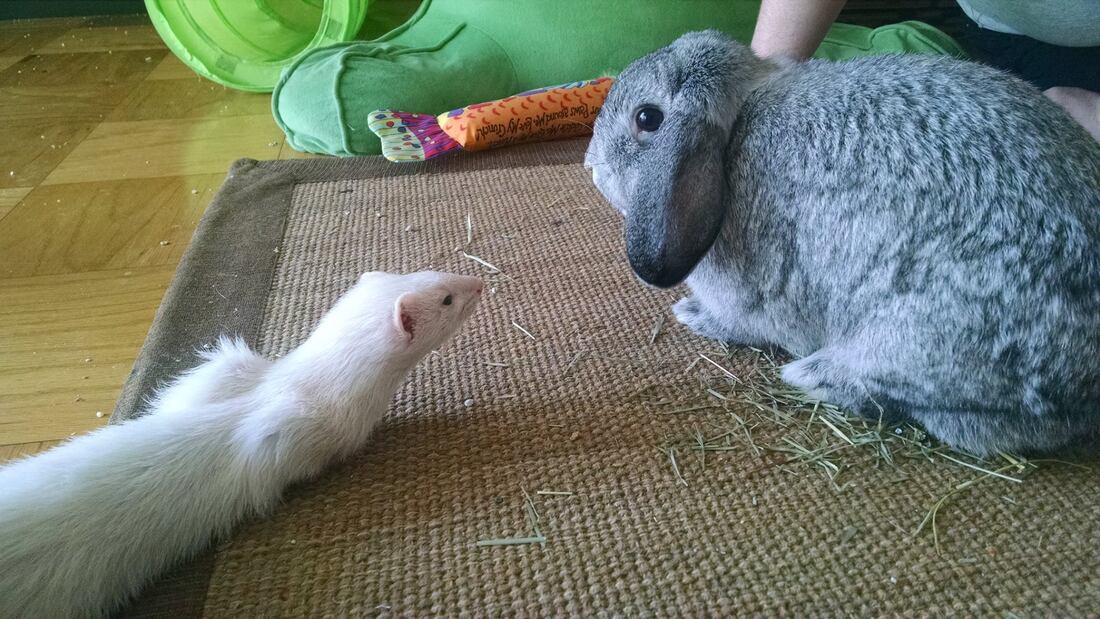
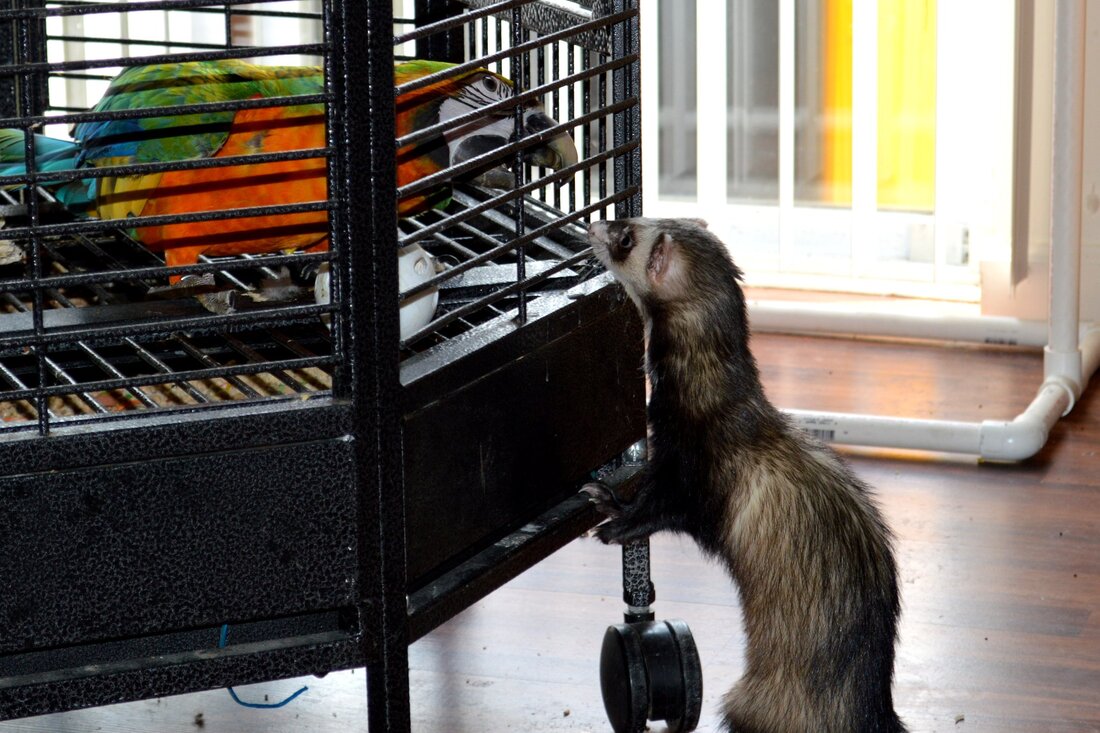
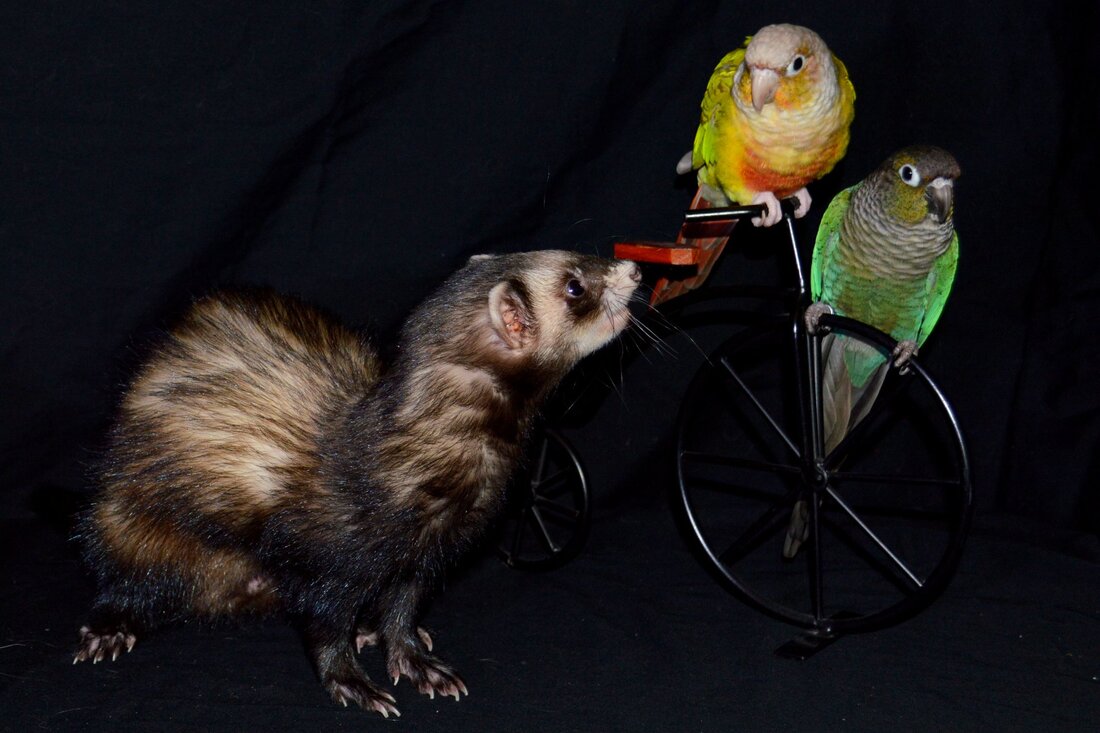
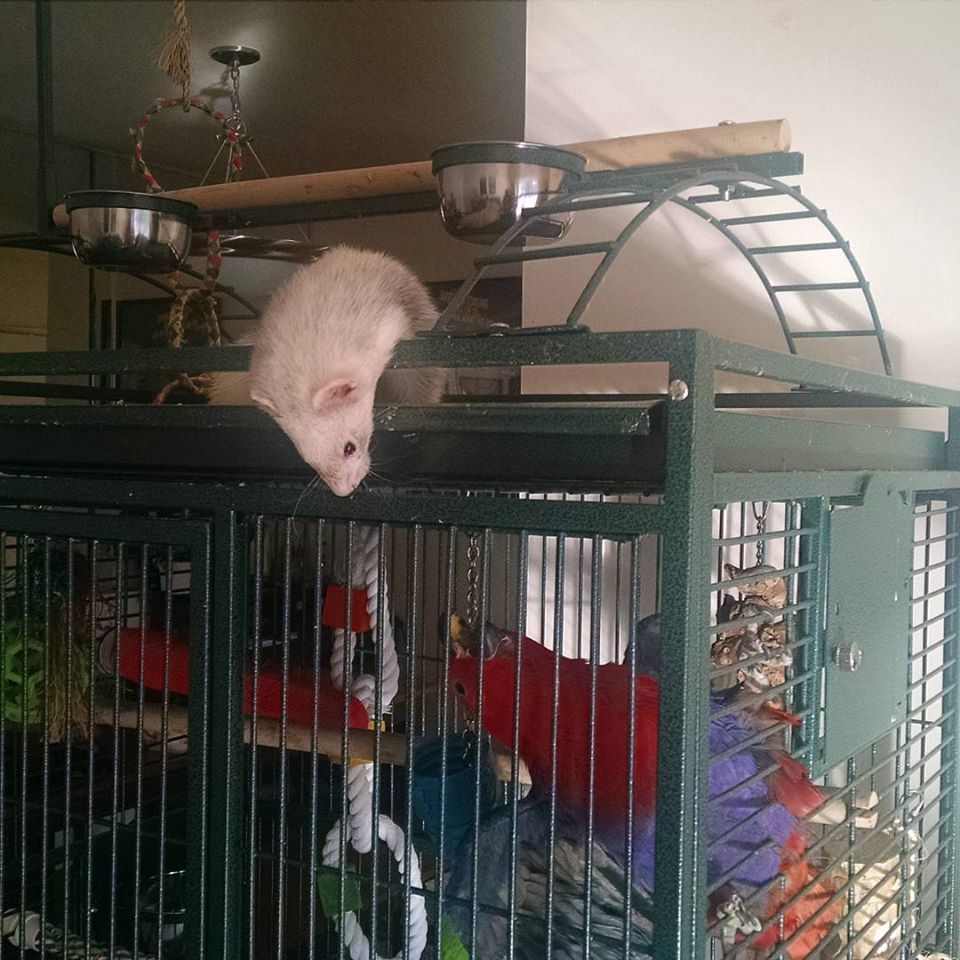
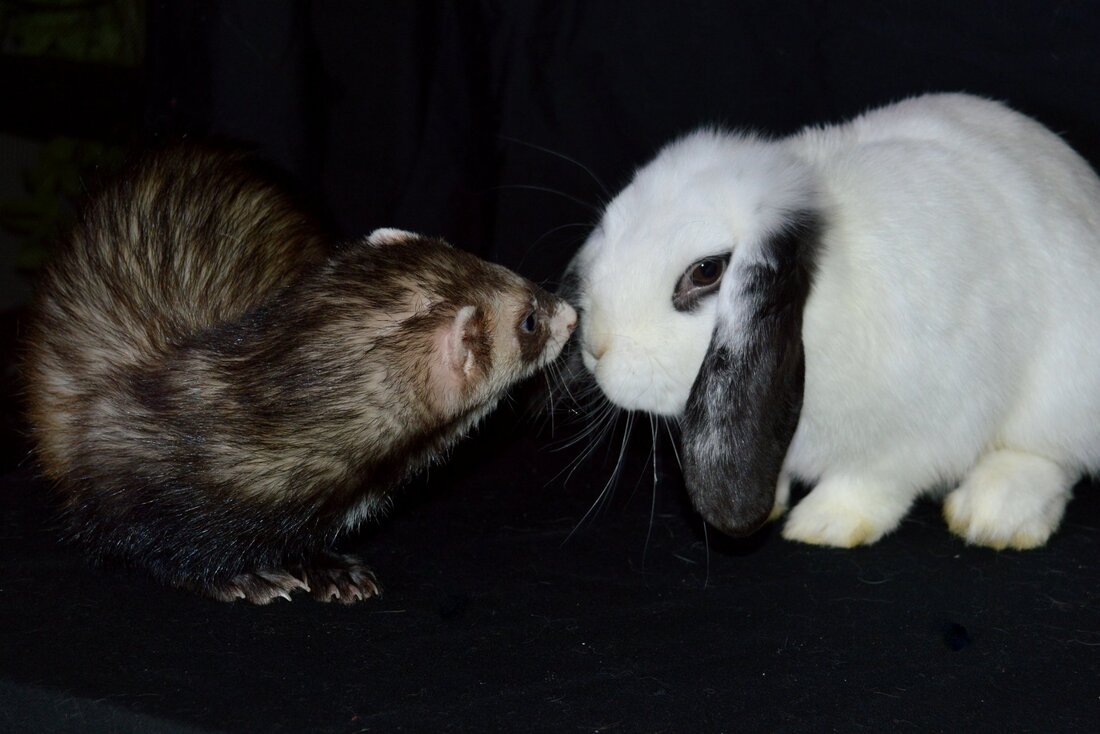
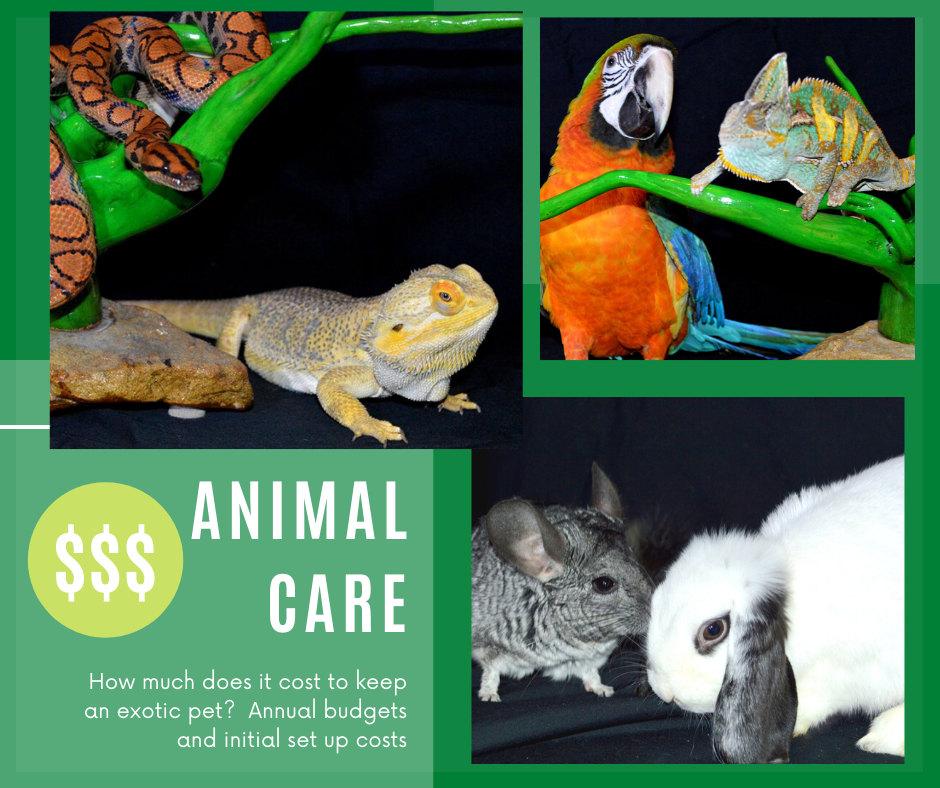

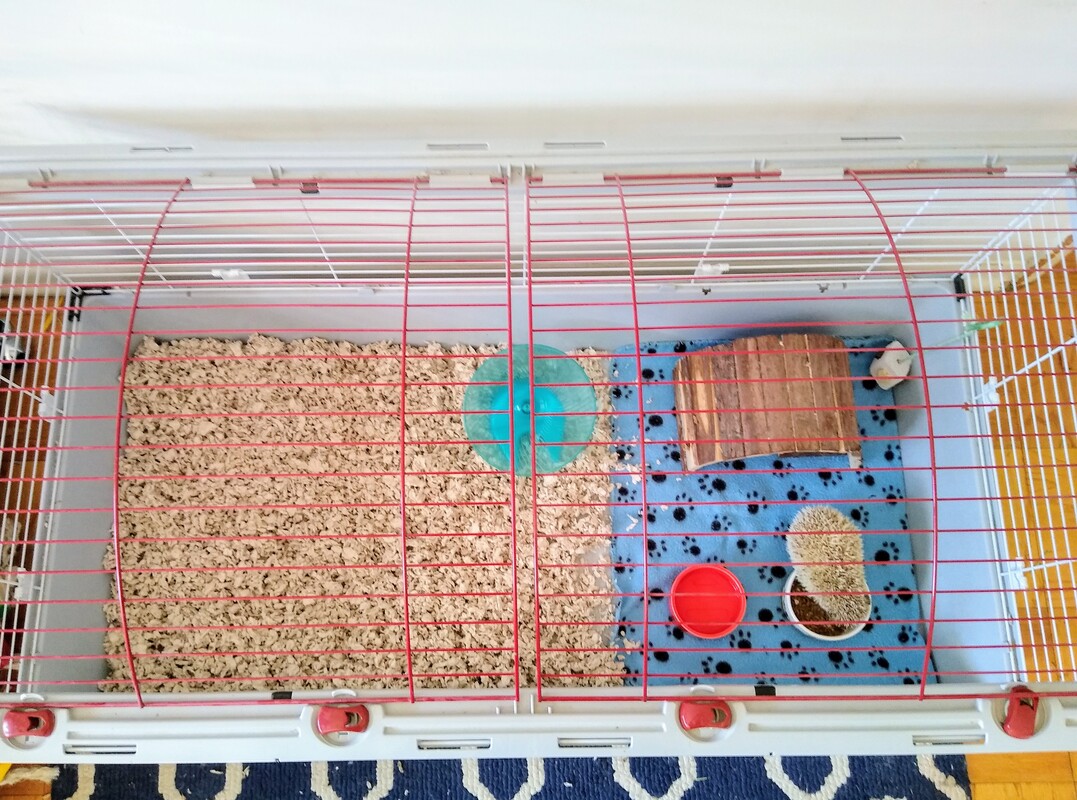
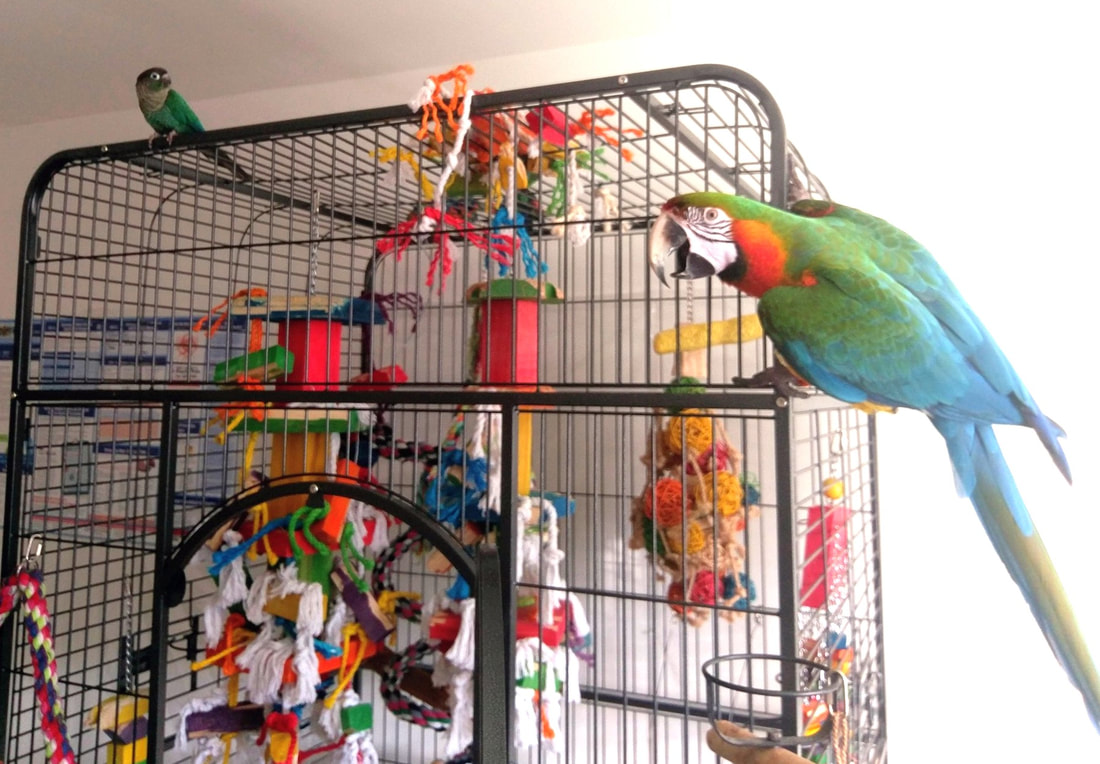
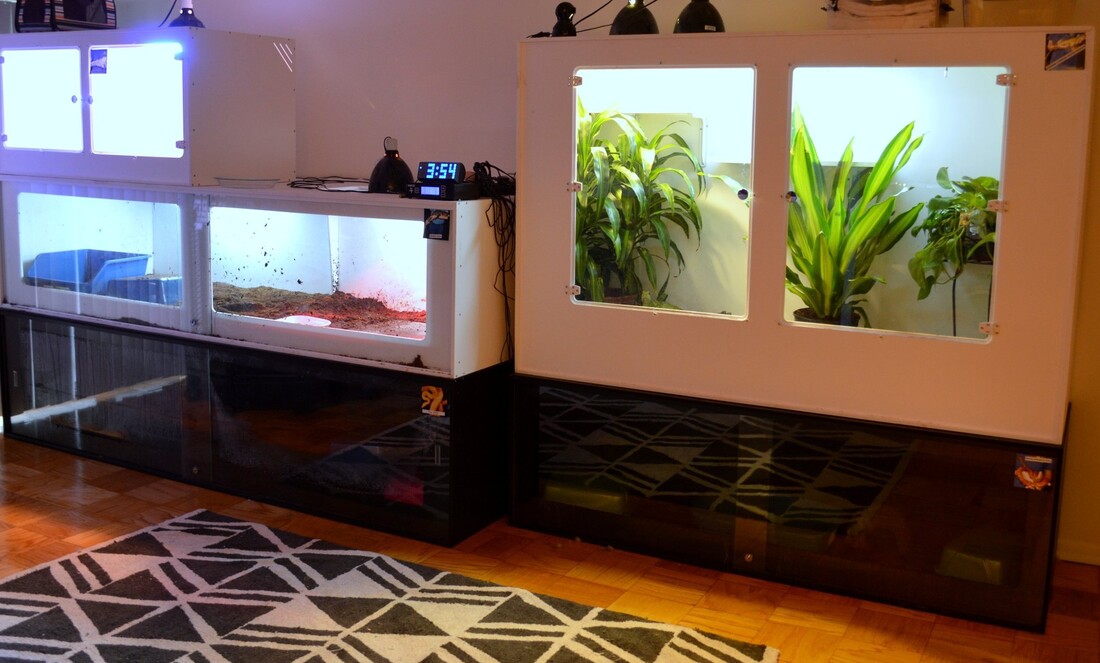
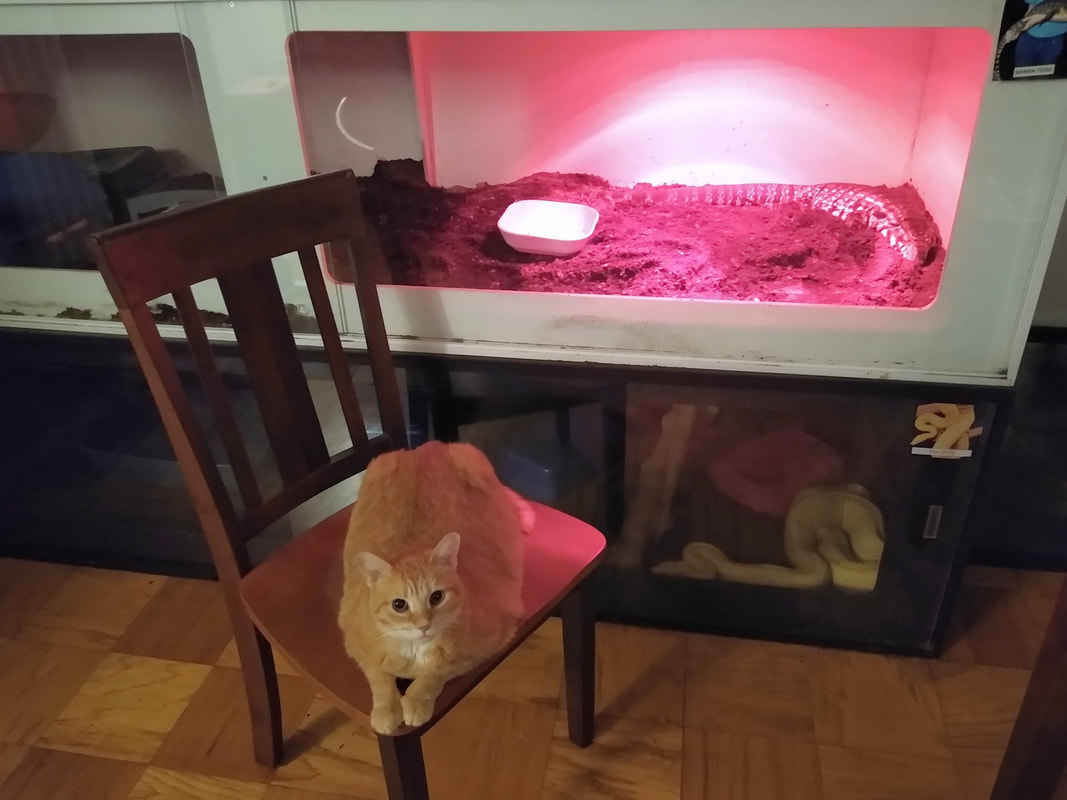
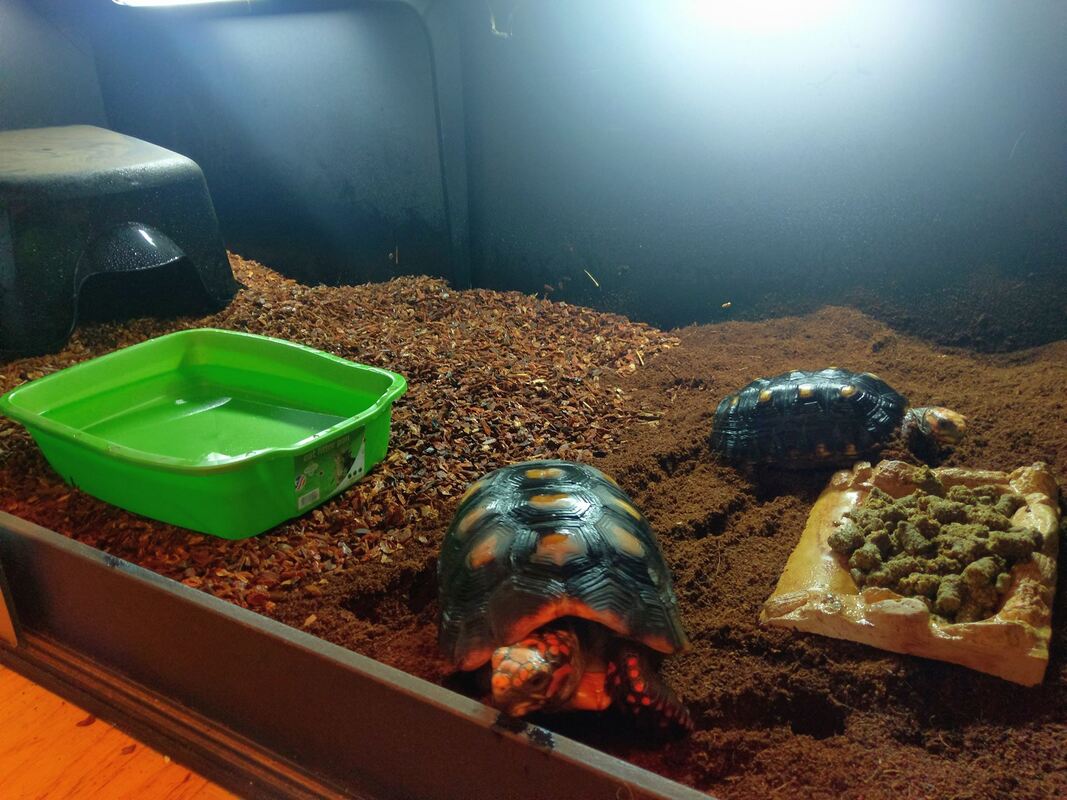
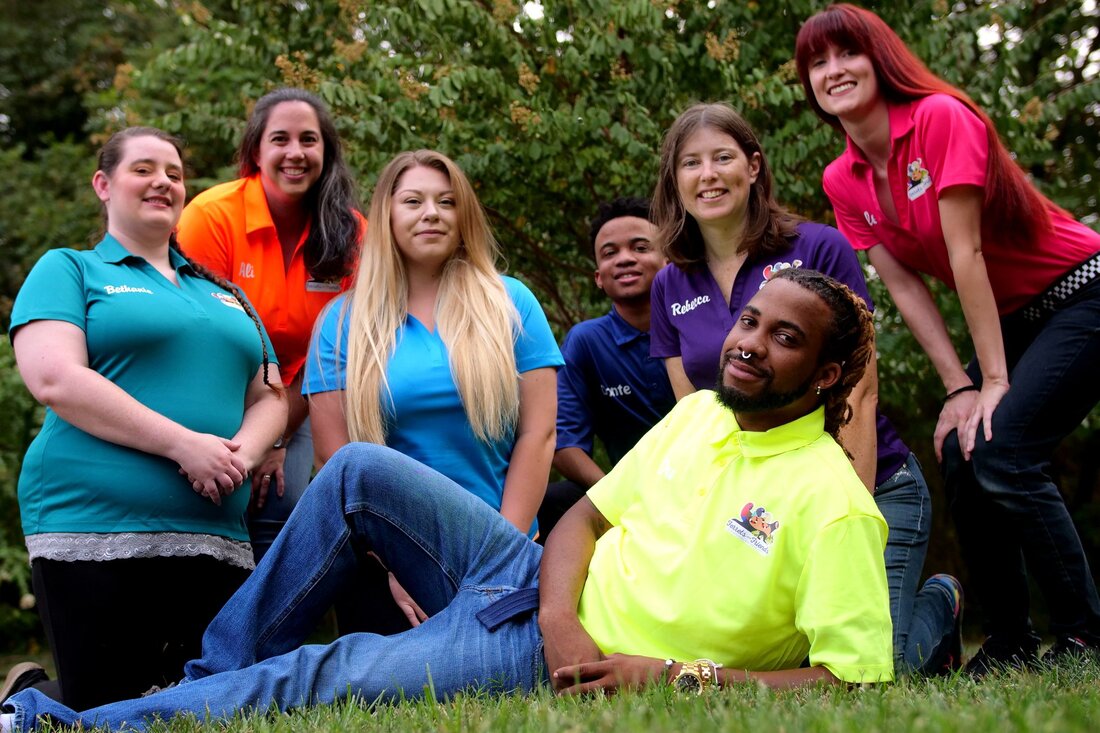
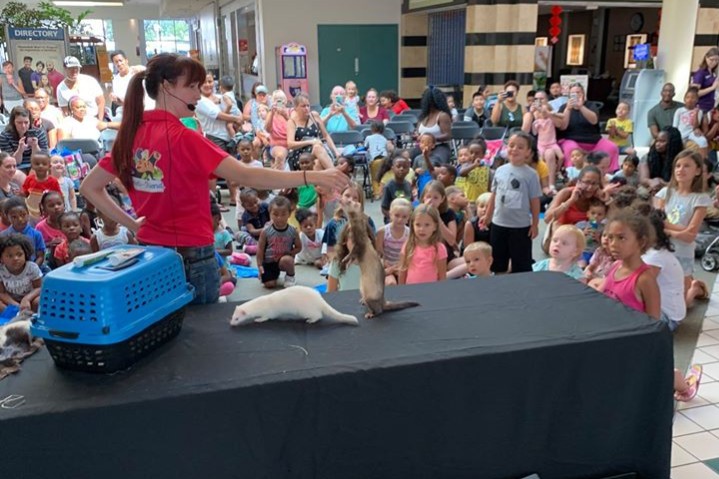
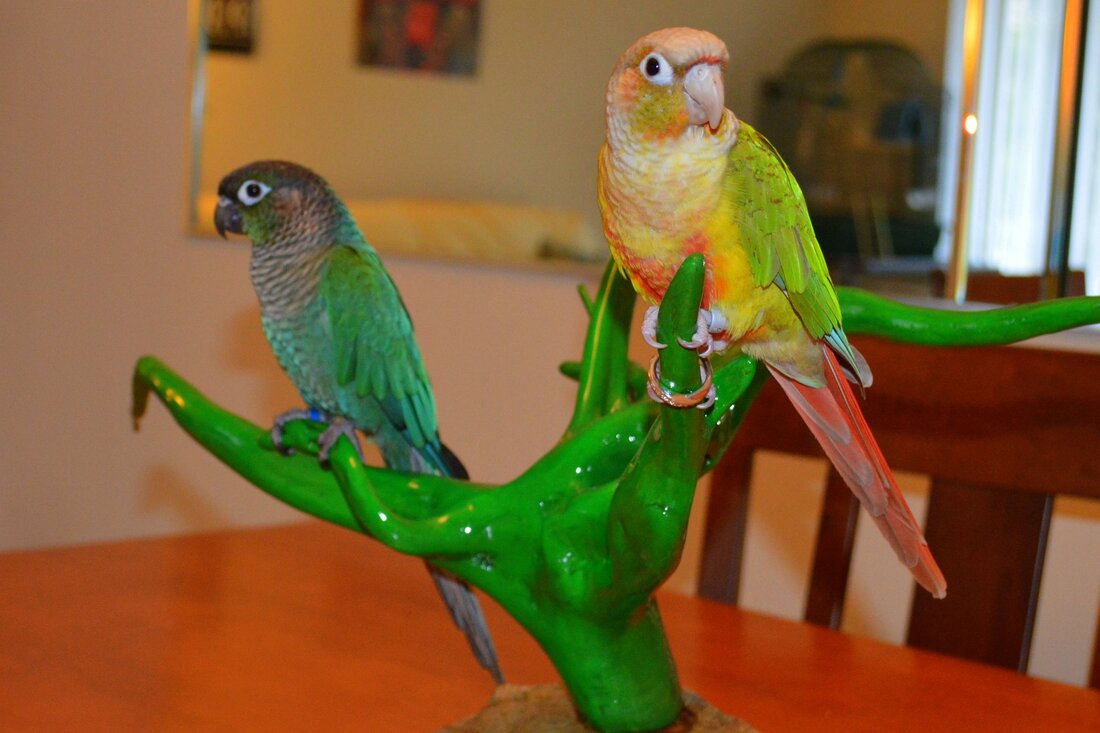
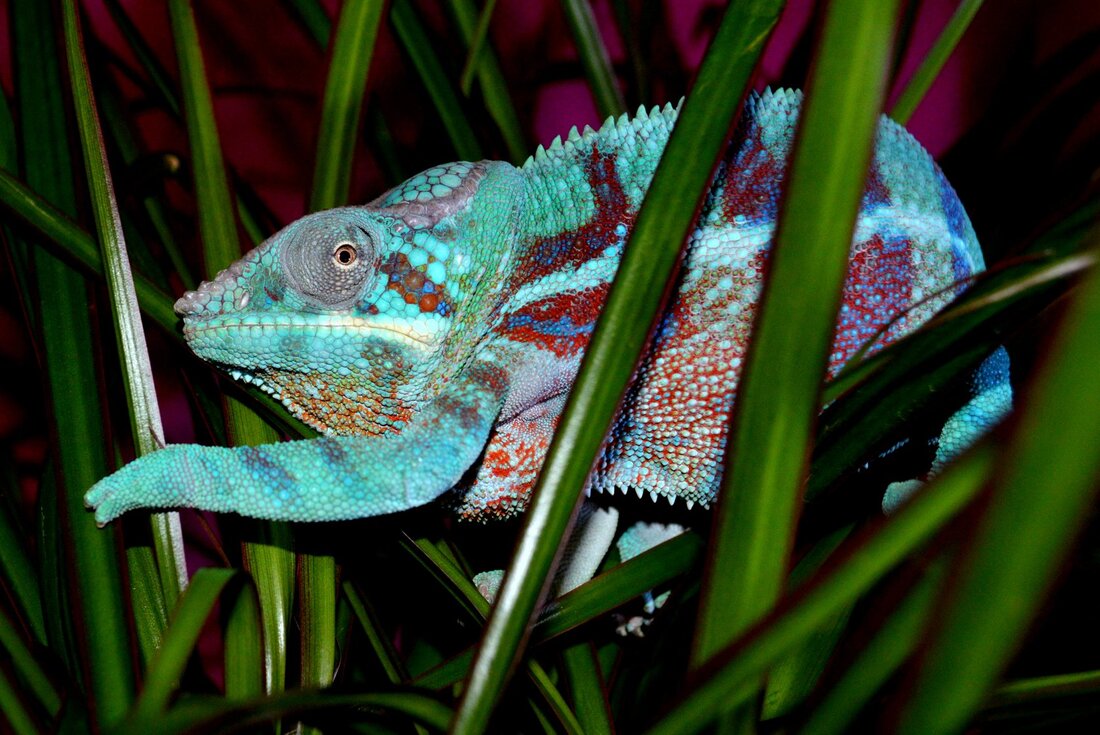
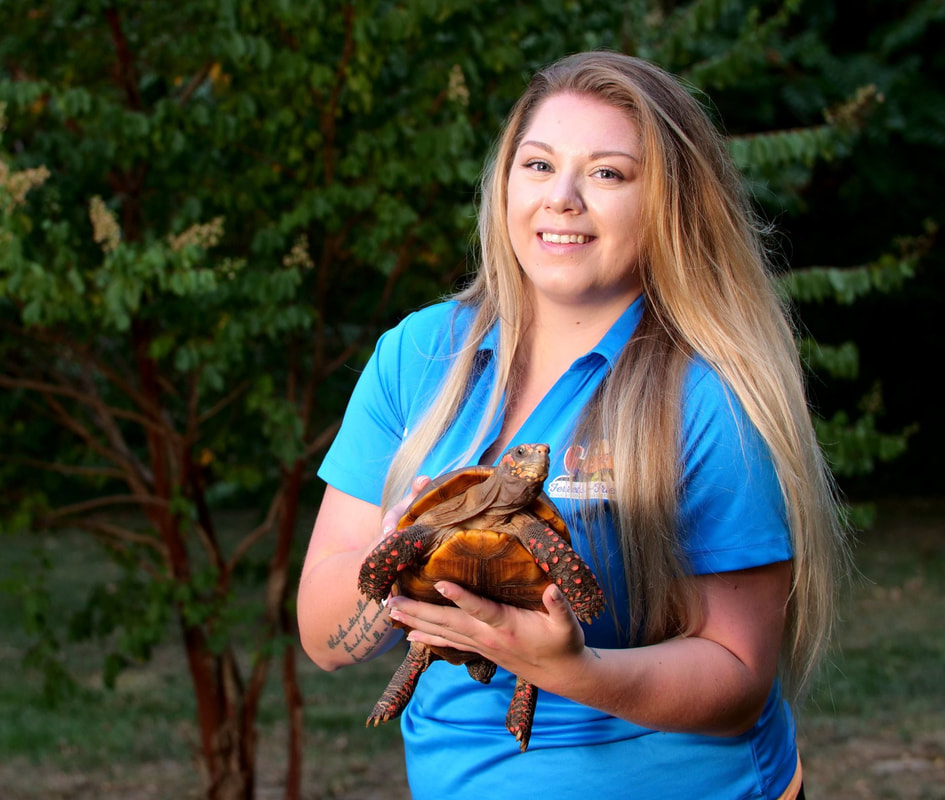
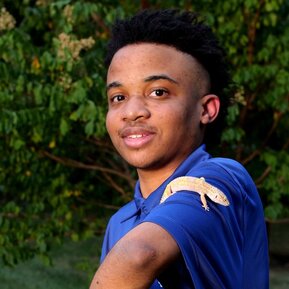
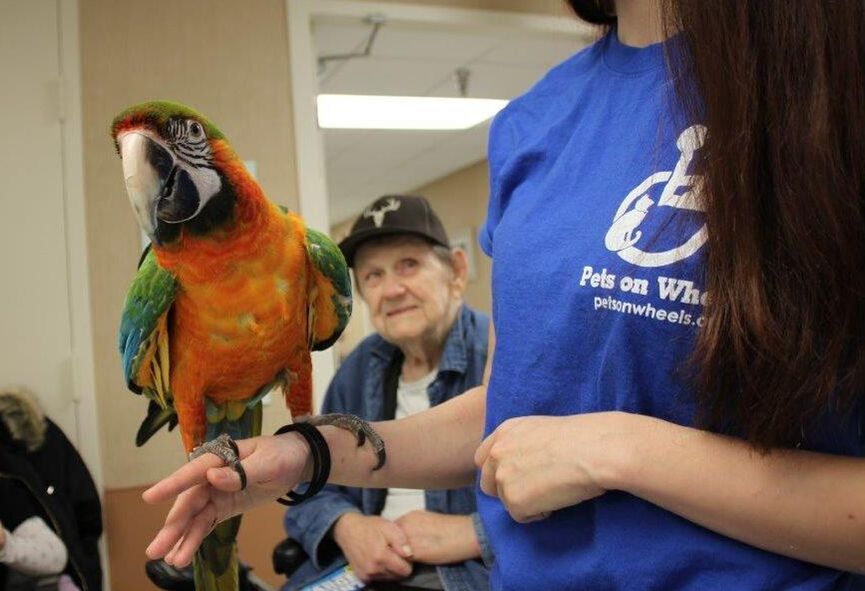
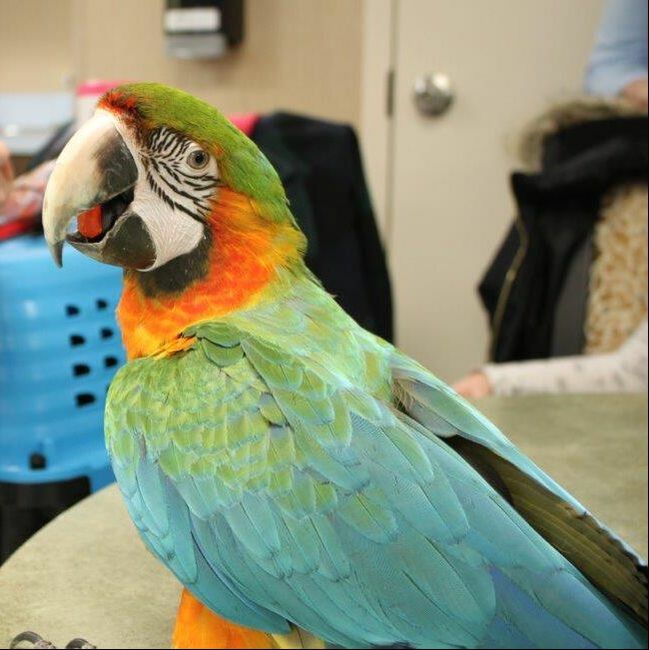

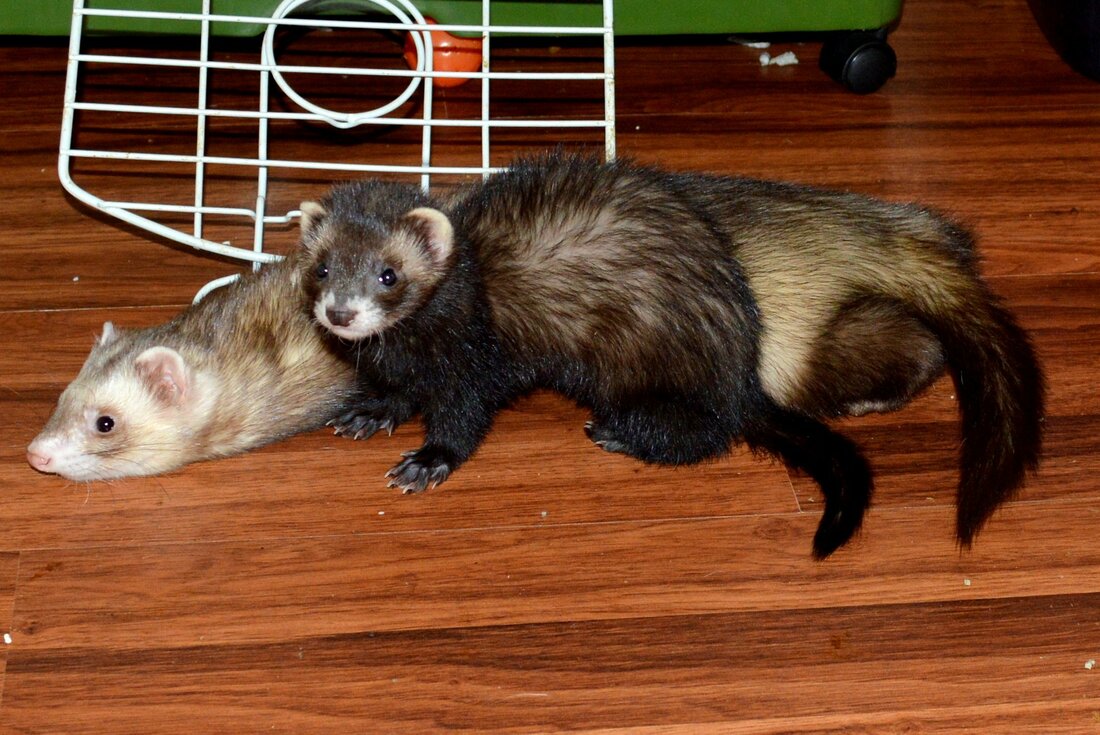
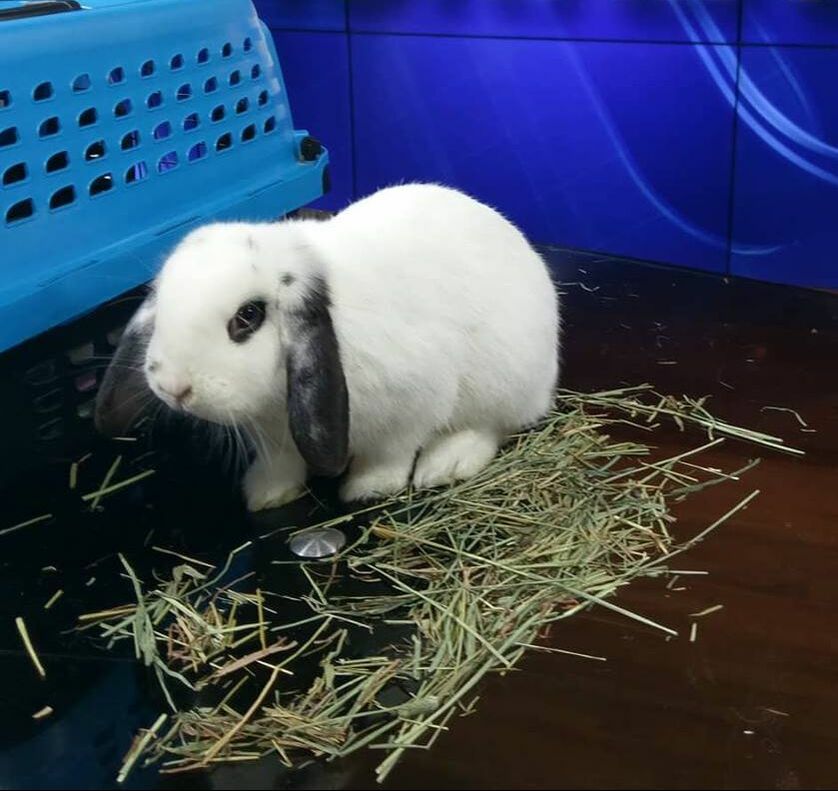
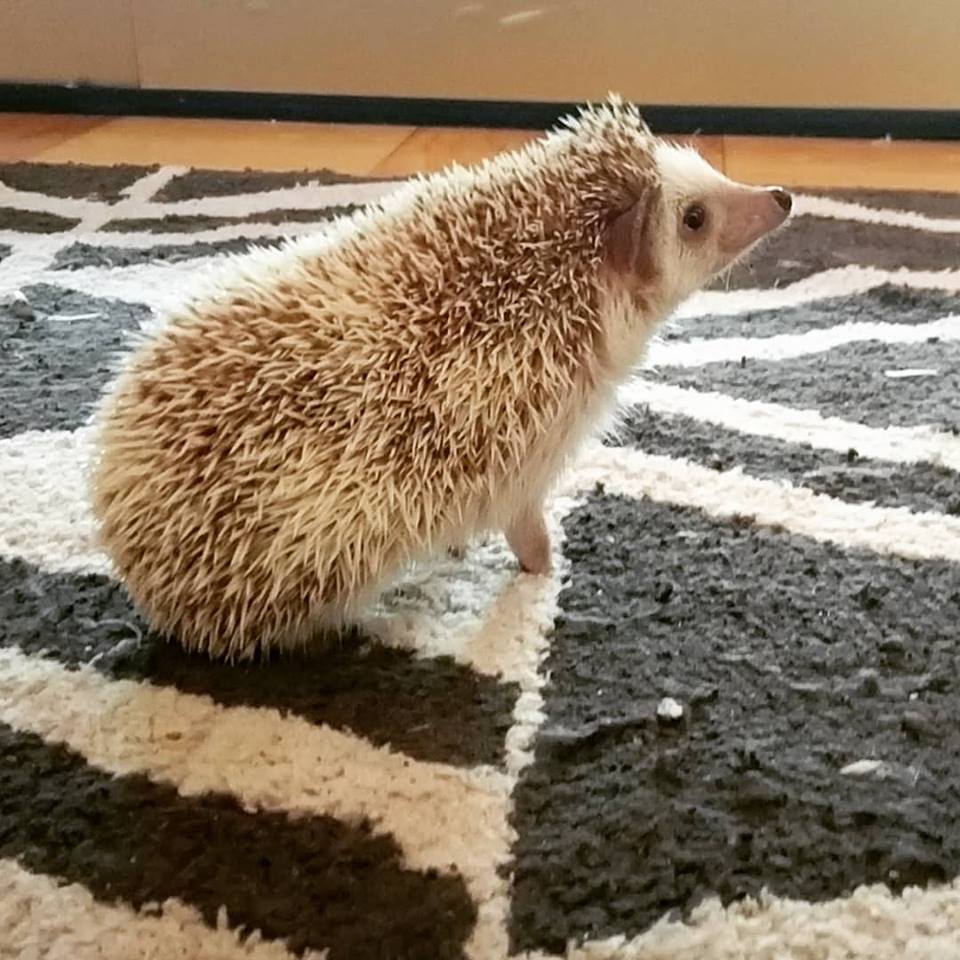
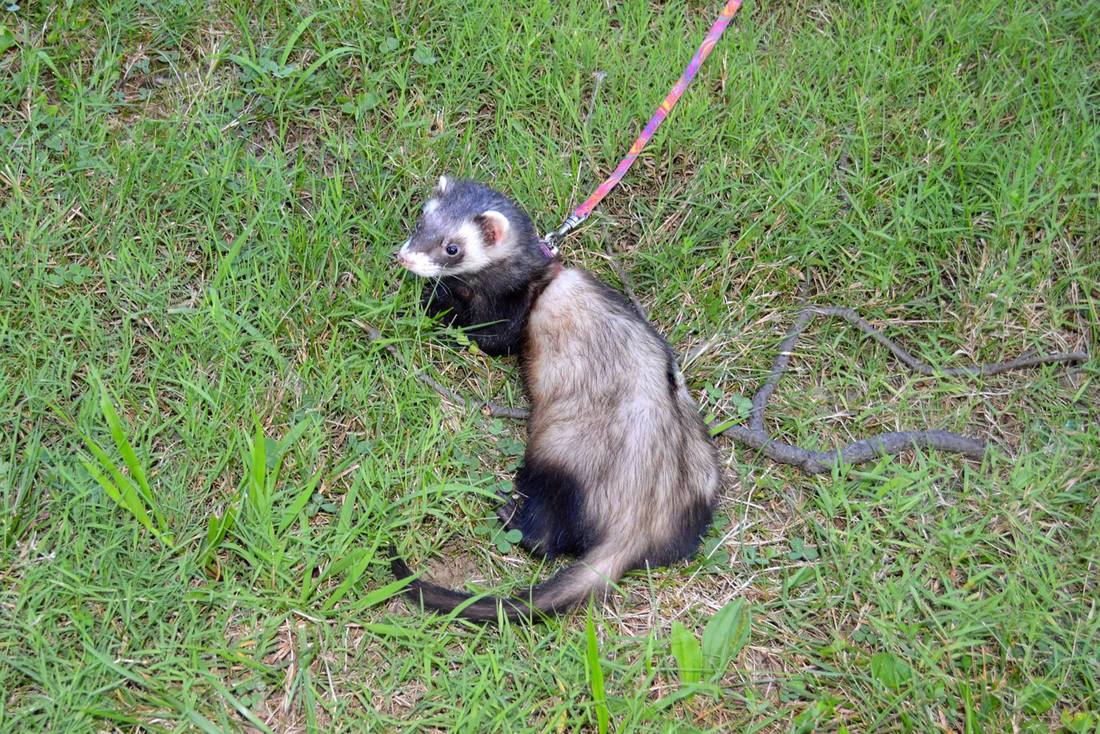
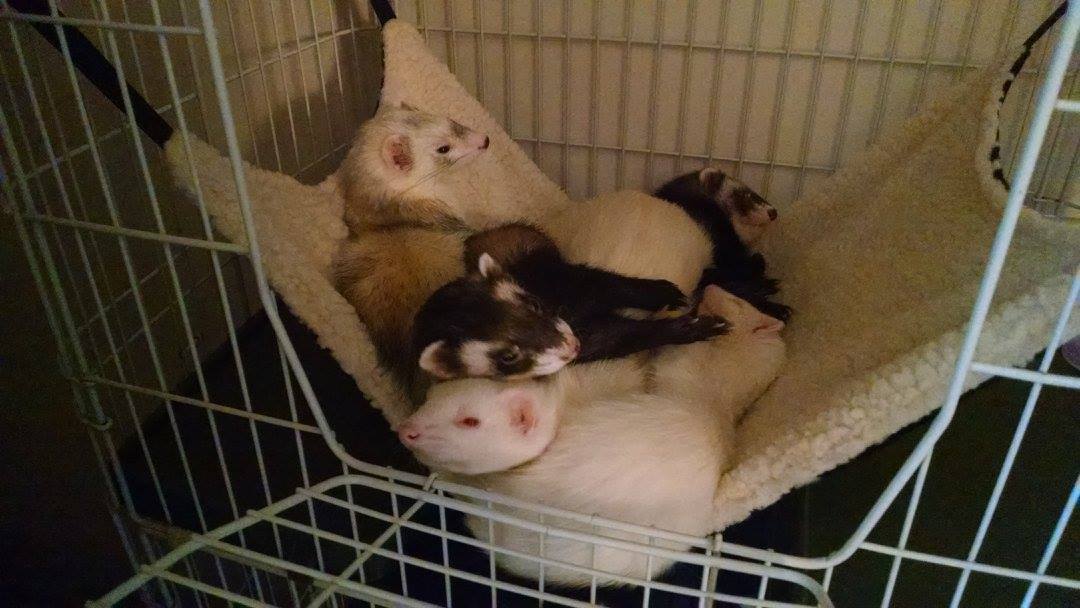
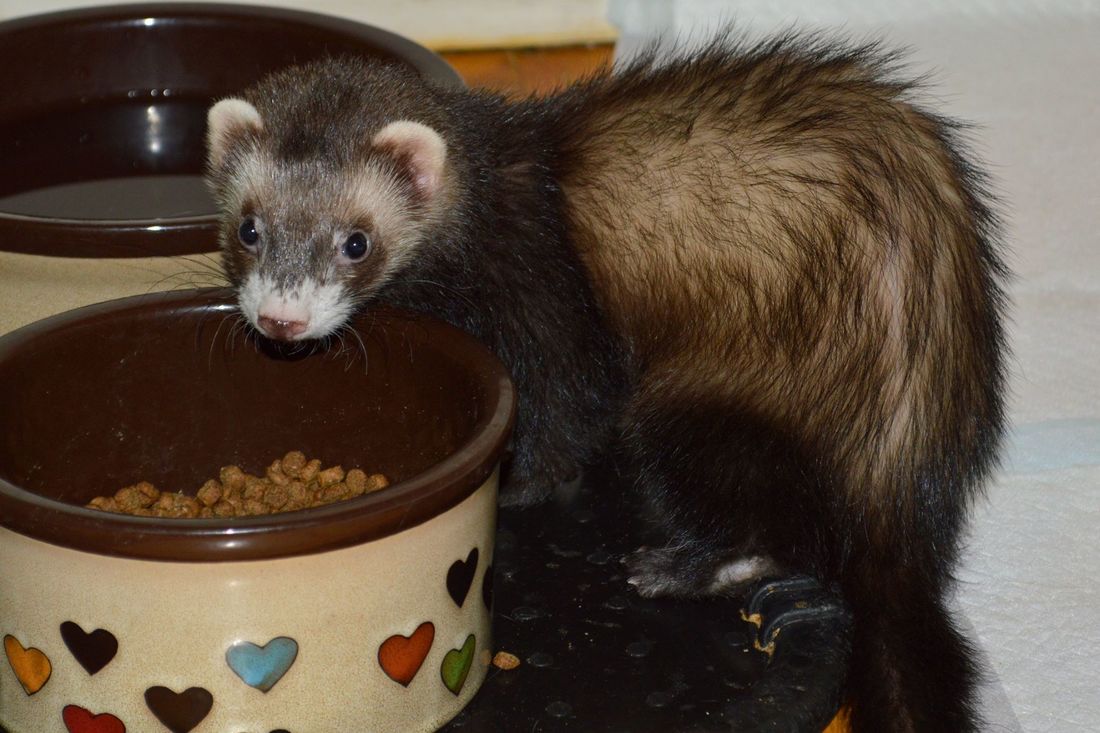
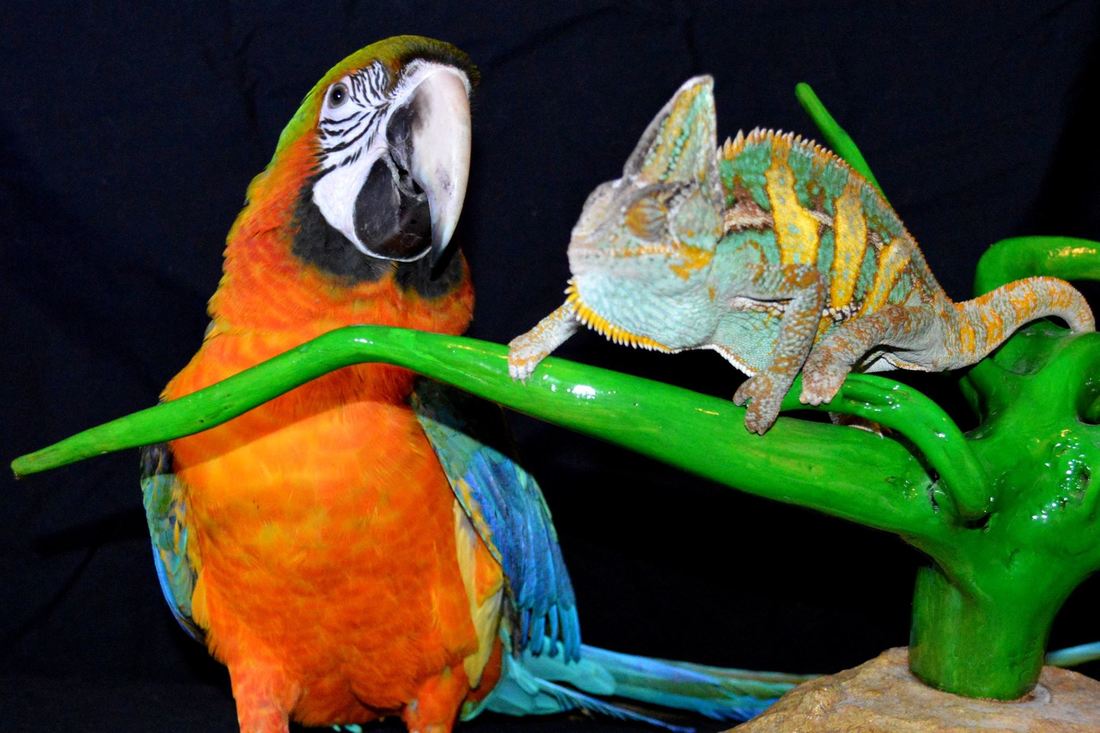
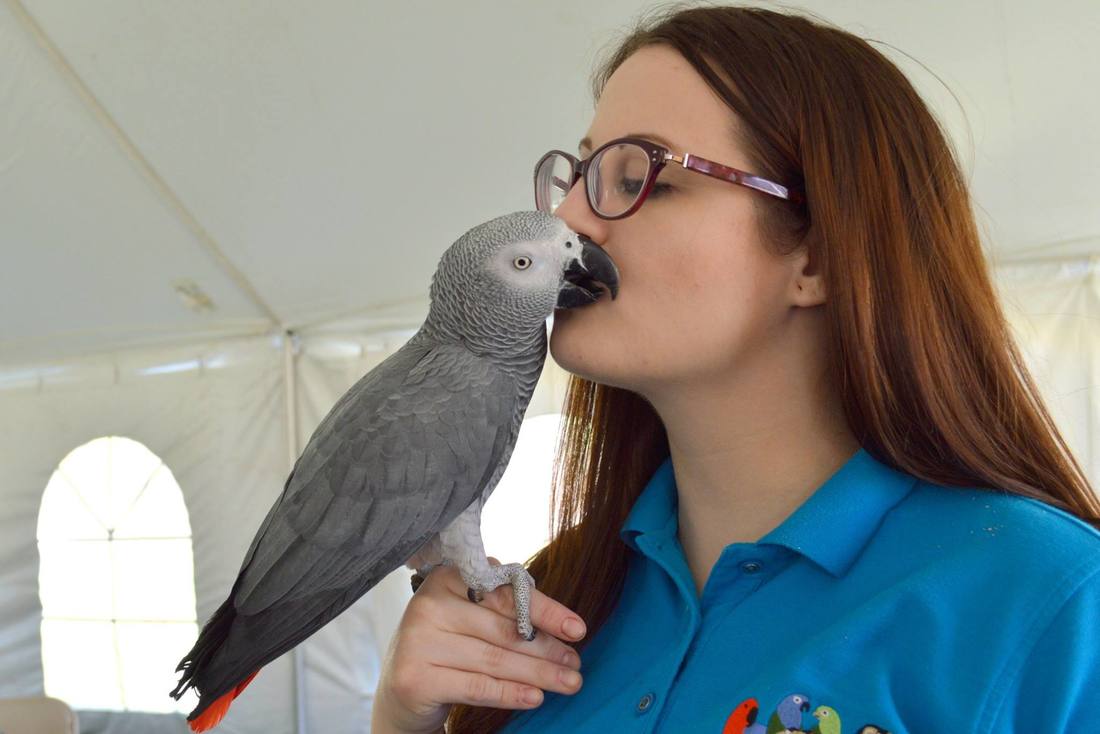
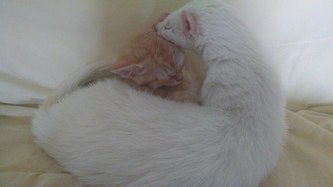
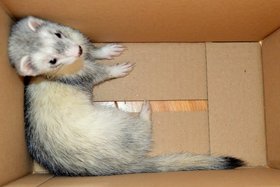
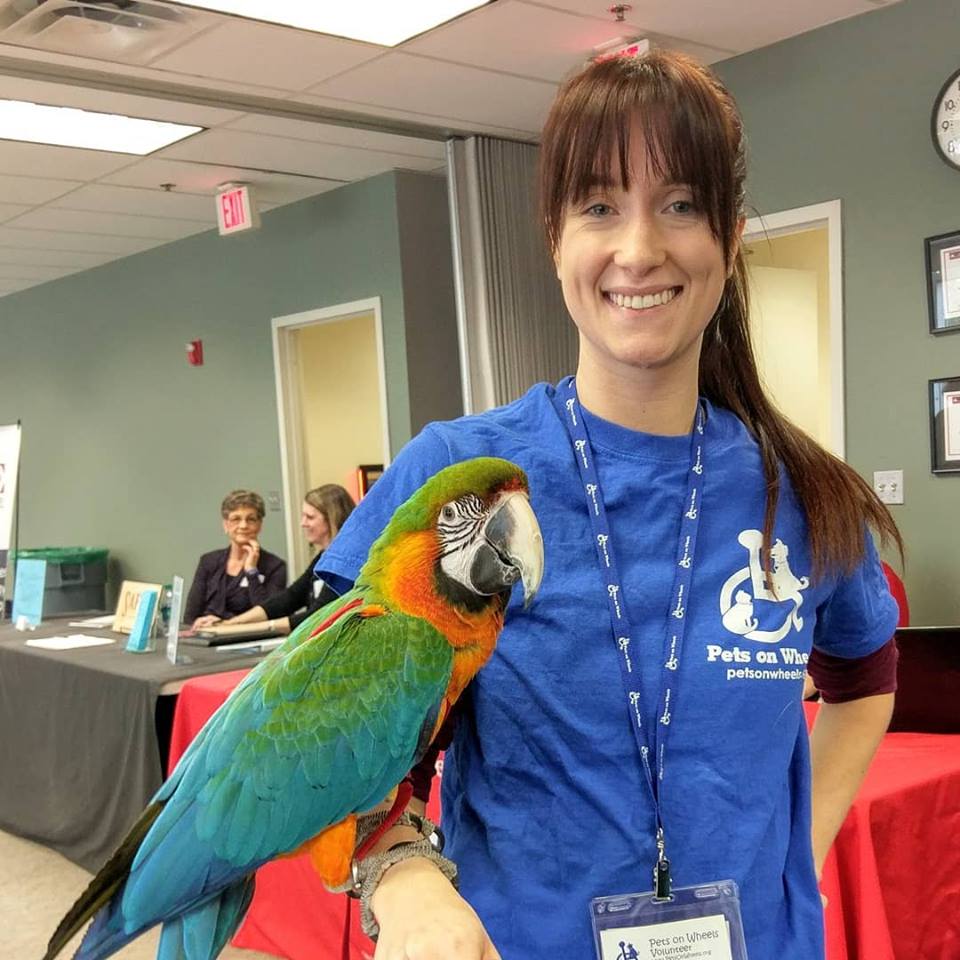
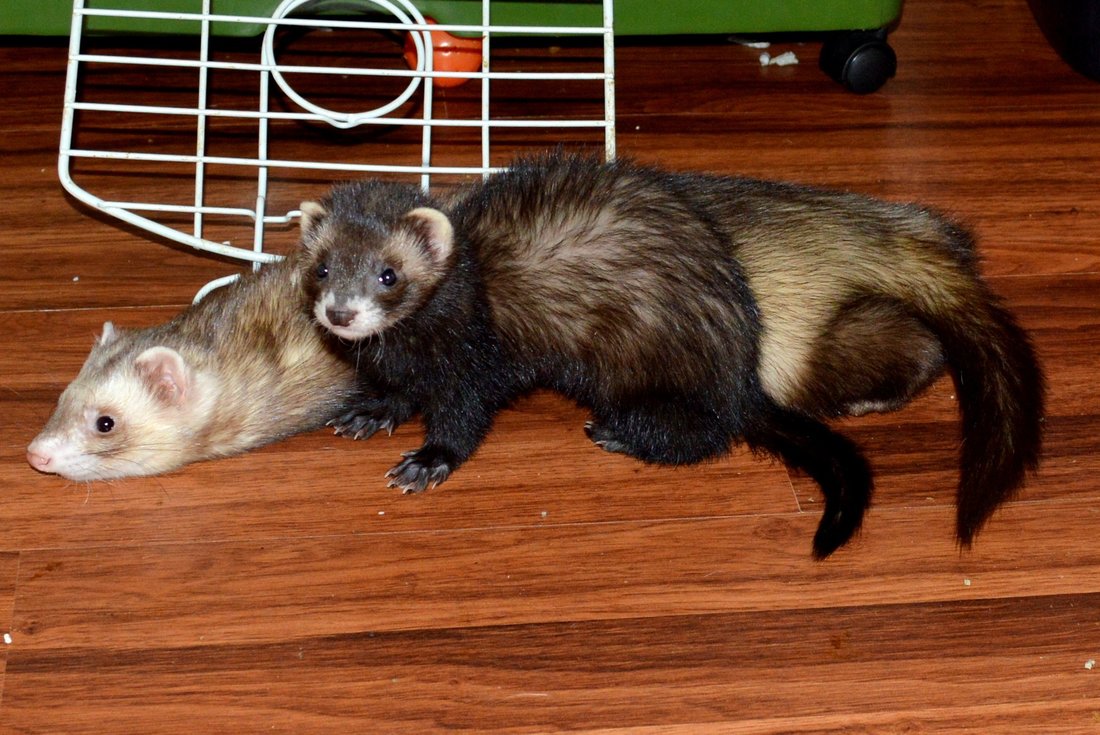
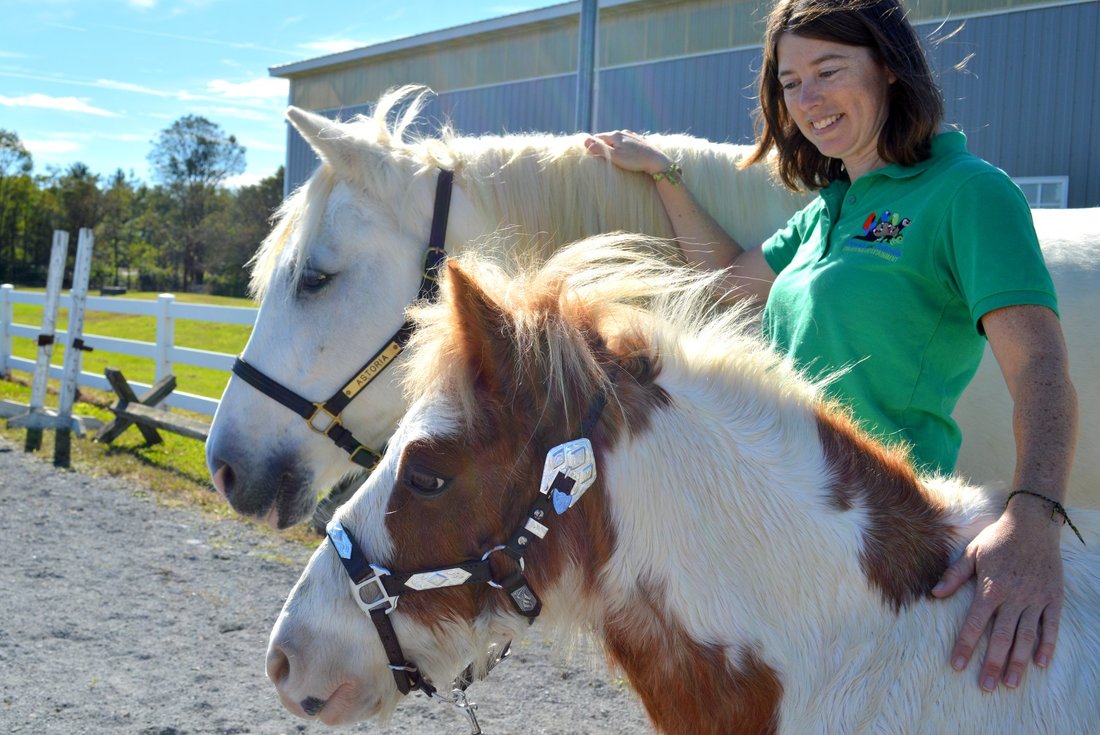

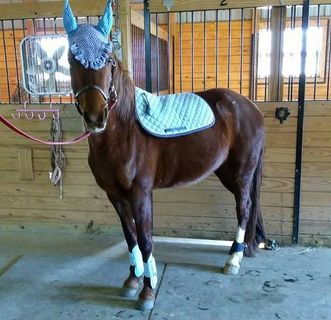
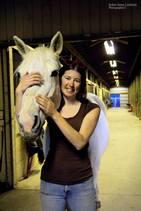
 RSS Feed
RSS Feed